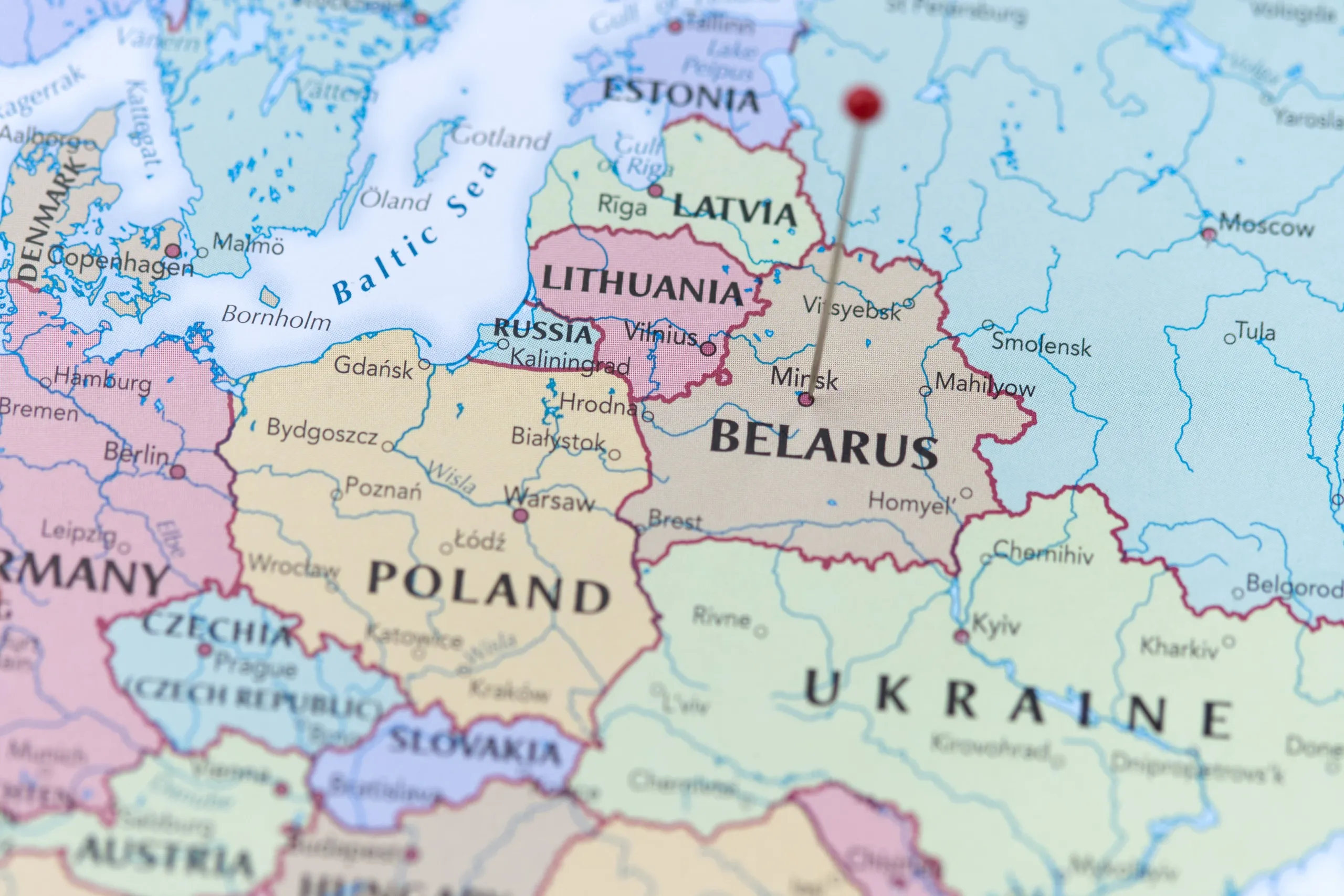Take Me to The Recipes
Belarus Food is deeply rooted in the country’s rich history and cultural heritage. It reflects the resilience and resourcefulness of its people.
Nestled in Eastern Europe, Belarus boasts a diverse landscape, from lush forests to sprawling plains, shaping a climate ideal for agriculture. As we explore the nuances of Belarusian food, from its historical influences to its traditional recipes, join us on a gastronomic adventure through this often-overlooked culinary treasure.
Prepare to be whisked away on a gastronomic adventure as we unravel the secrets behind Belarusian cuisine, exploring traditional dishes, understanding the historical backdrop, and discovering the unique flavors that define this culinary tapestry.
Belarusian Food – Key takeaways
- Belarusian cuisine is a reflection of the country’s history and cultural influences.
- The climate and geography of Belarus contribute to the availability of fresh and hearty ingredients.
- Traditional Belarusian dishes showcase a harmonious blend of simplicity and robust flavors.
- The health implications of Belarusian cuisine highlight the use of wholesome, natural ingredients.
- The national dish, Draniki, holds a special place in Belarusian hearts and tables.
- Exploring Belarusian food ingredients unveils a palette of flavors unique to the region.
- Belarusian recipes offer a delightful opportunity to recreate authentic dishes at home.
Take Me to The Recipes
Where is Belarus?

Belarus is a landlocked country in Eastern Europe, bordered by Russia in the north and east, Ukraine in the south, Poland in the west and Lithuania and Latvia in the north.
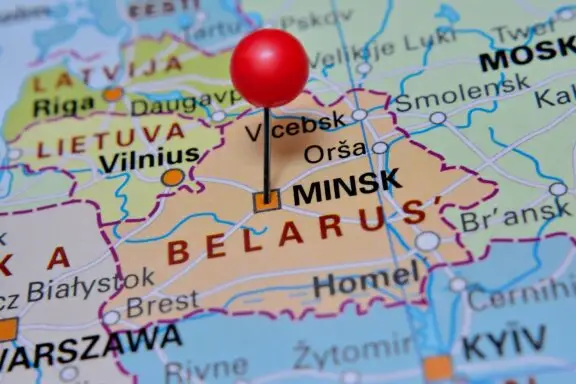
Index of Contents
- Take Me to The Recipes
- More Articles for Your Pleasure
- 10 Fascinating Facts about Belarus
- A Detailed Look at Belarus’s History and Its Effect on Belarusian Cuisine
- How Belarus’s Climate and Geography Influences Belarusian Food
- Understanding the Essence of Belarusian Food Recipes
- Traditional Belarusian Food
- What are the Health Implications of Belarusian Cuisine?
- Belarusian National Dish
- Exploring Belarusian Food Ingredients: The Flavors of Belarusian Cuisine
- Belarusian Recipes – Great Examples to Try at Home
- Conclusion
- Frequently Asked Questions
More Articles for Your Pleasure
- North and South American Cuisine – A Culinary Expedition
- European Cuisine: Savor the Continent’s Best Culinary Secrets!
- African Cuisine: Discover the Bold Flavors & Global Charm!
- Asian Cuisine Unlock its Secrets – Taste, Health & Global Influence!
- Oceania Cooking: A Culinary Journey Through the Pacific
Savor 33 iconic Belarusian Dishes – Click on each tantalizing picture to open up the Recipe.
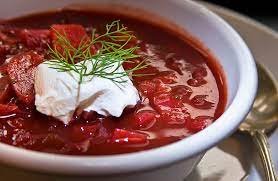
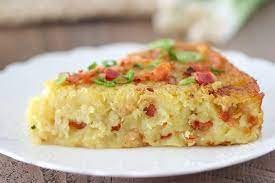

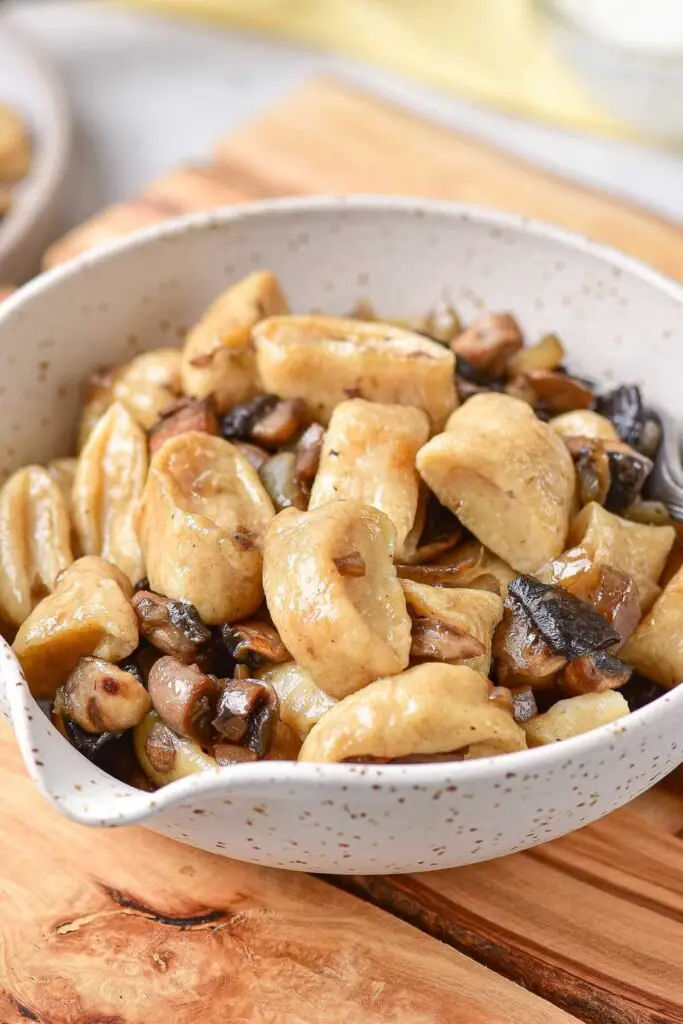



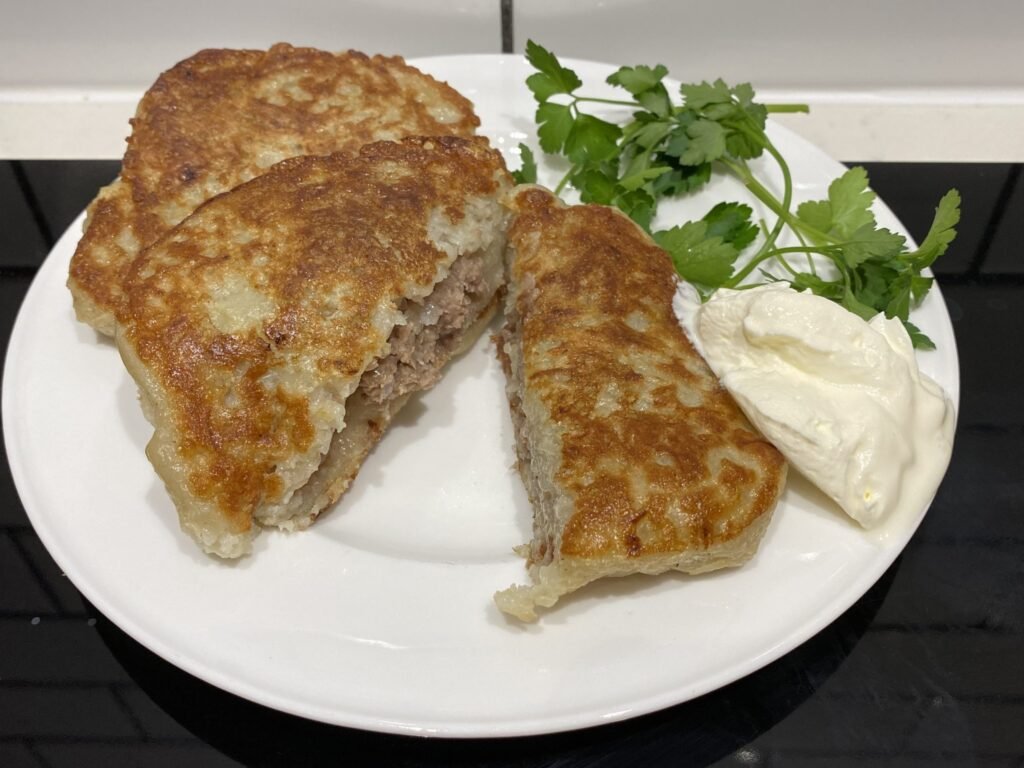
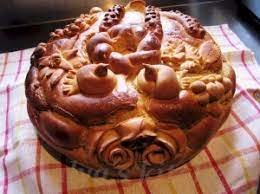
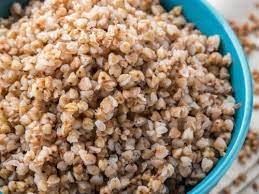
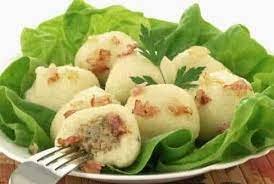
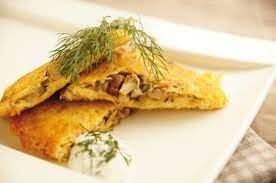
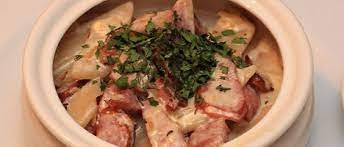
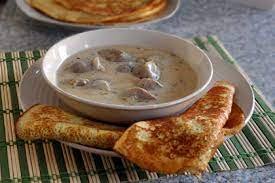


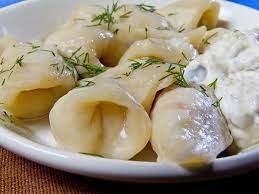
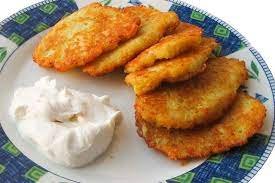
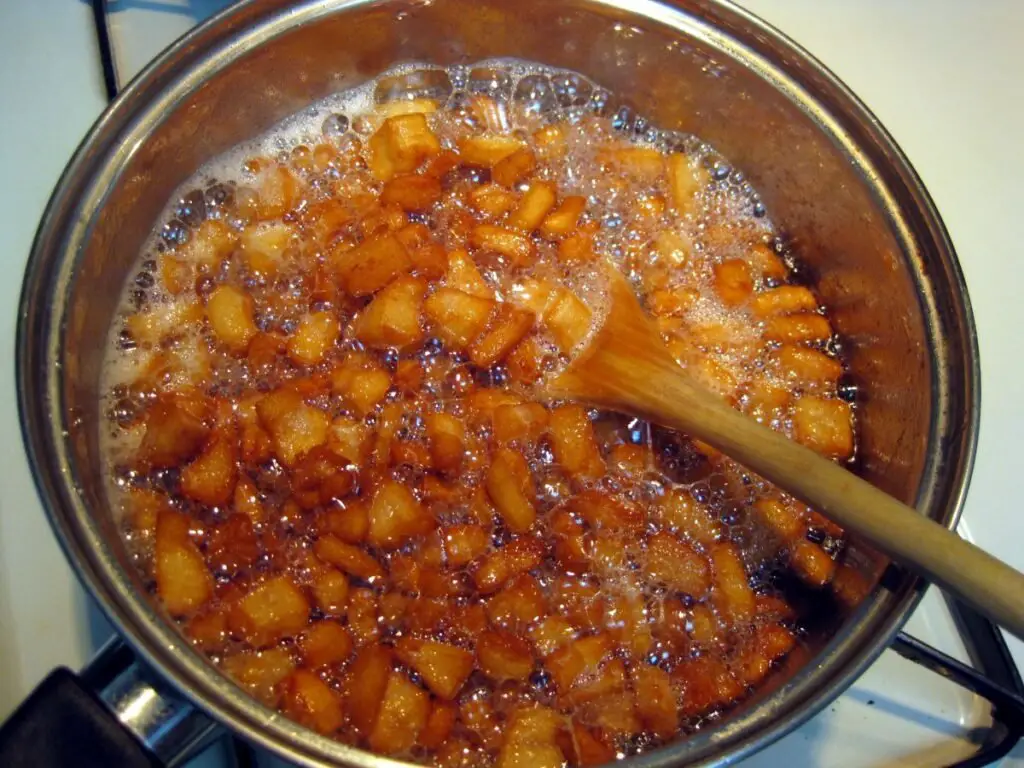

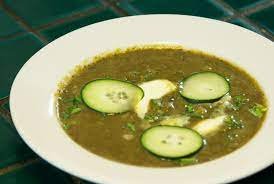
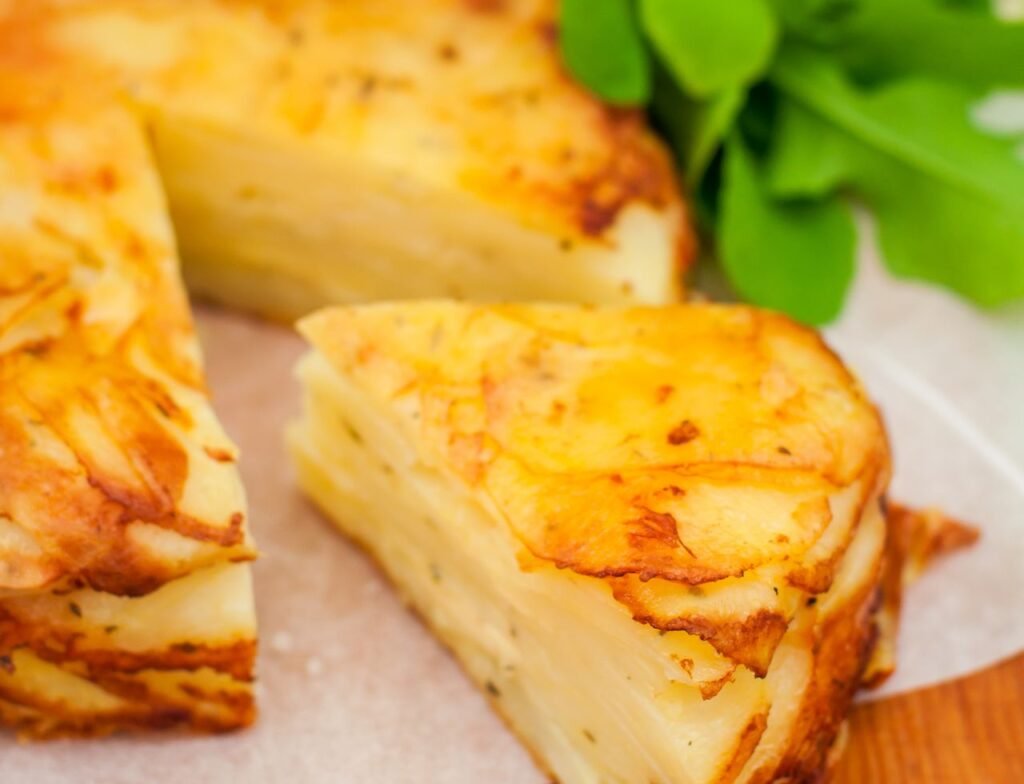
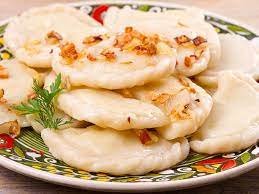
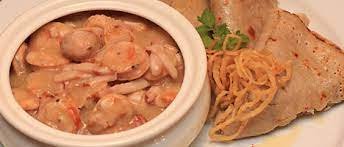
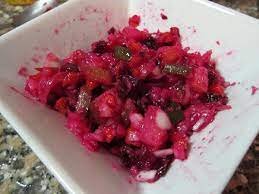
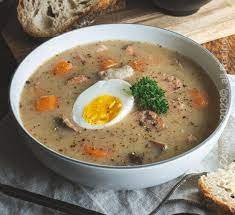

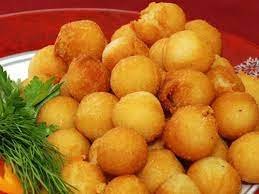

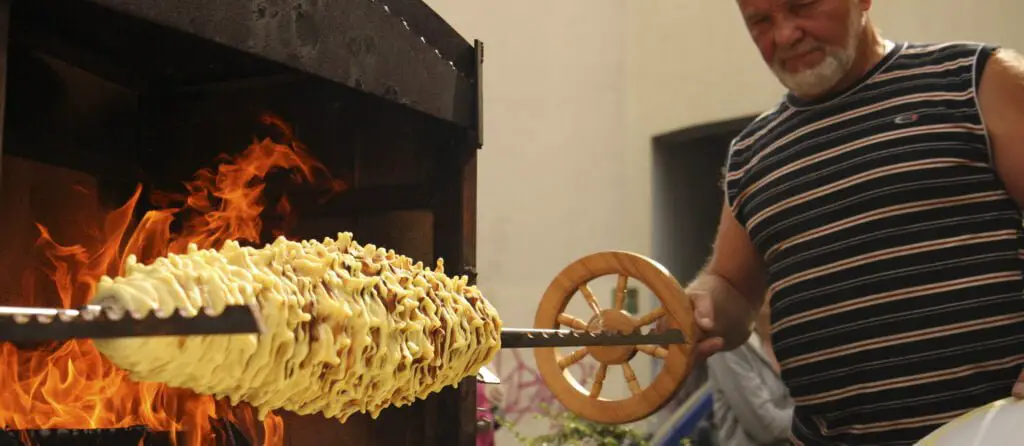
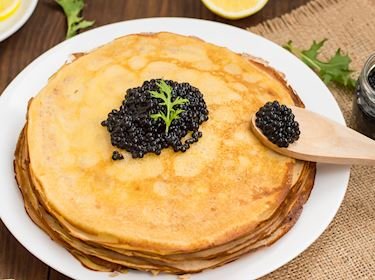
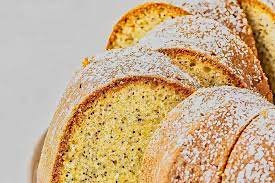

10 Fascinating Facts about Belarus
As we venture into the heart of Eastern Europe, Belarus beckons with its rich history, stunning landscapes, and unique cultural quirks. Join us on a journey through 10 fascinating facts and quirky laws that shed light on the captivating world of Belarus.
The Last European Dictatorship

Belarus is often referred to as the “last dictatorship in Europe” due to the authoritarian rule of President Alexander Lukashenko, who has held power since 1994. Despite recent political unrest, Belarus remains a country where freedom of speech and opposition are heavily restricted.
The Land of the Storks
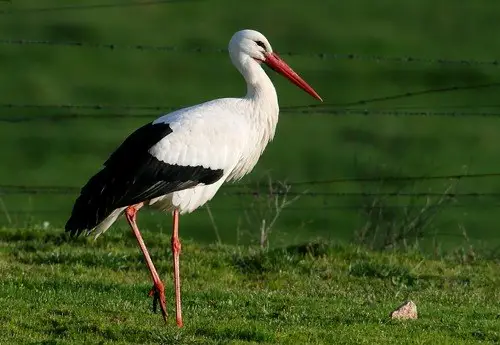
Belarus is known as the “Land of the Storks” due to its large population of these majestic birds. Storks are considered a symbol of good luck and prosperity in Belarusian folklore, and their nests can be spotted atop rooftops and telephone poles across the country.
Visa-Free Travel
In a bid to boost tourism, Belarus offers visa-free travel for citizens of numerous countries, including the European Union, the United States, and Canada, for stays of up to 30 days.
This initiative has made Belarus an increasingly popular destination for international travelers seeking to explore its hidden gems.
The Kissing Tradition

Belarusians have a charming tradition of greeting friends and family members with three kisses on the cheek—first right, then left, and then right again.
This gesture is a sign of affection and warmth, reflecting the strong bonds of community and family in Belarusian culture.
The Museum of Soviet-era Technology

Located in Minsk, the Museum of Soviet-era Technology offers a fascinating glimpse into Belarus’s industrial past. From vintage cars and motorcycles to retro electronics and household appliances, the museum showcases relics from the Soviet era that continue to fascinate visitors today.
The Belarusian Bison
Belarus is home to one of Europe’s largest populations of European bison, also known as wisents. These majestic creatures can be found roaming the country’s primeval forests and protected nature reserves, symbolizing the country’s commitment to wildlife conservation.
The Rite of Spring
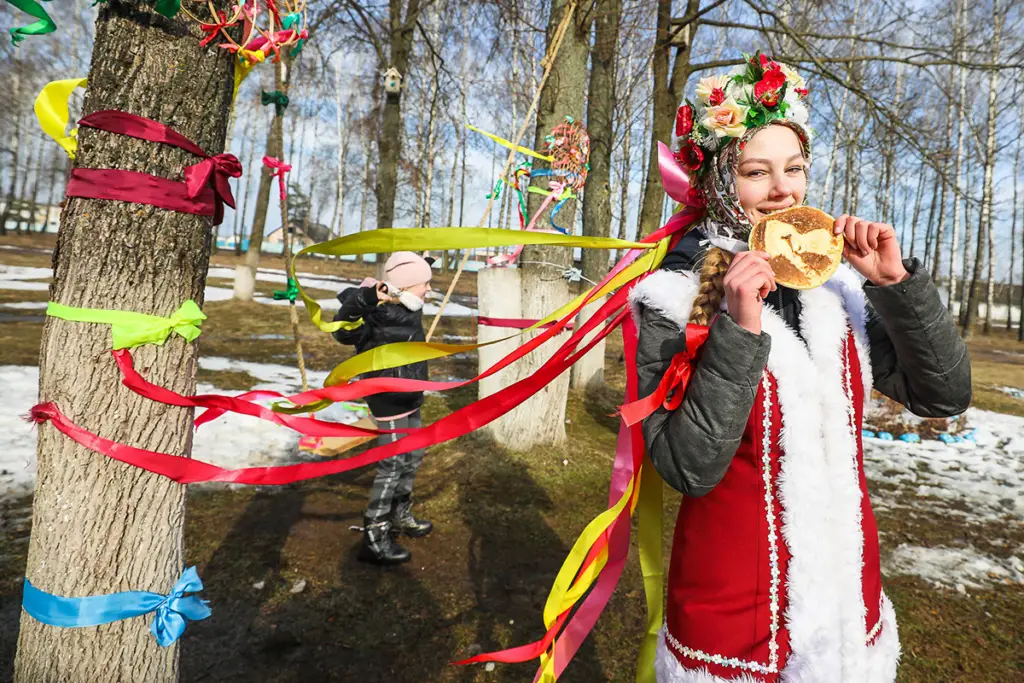
Every year on the first day of spring, Belarusians celebrate the ancient pagan festival of Maslenitsa, also known as “Kupalle.” This lively event features traditional music, dance, and the burning of straw effigies to mark the arrival of spring and the renewal of life.
Potato Obsession
Belarusians have a deep love for potatoes, which are a staple ingredient in many traditional dishes. From potato pancakes (draniki) to potato dumplings (kletski), potatoes are celebrated for their versatility and hearty flavor in Belarusian cuisine.
The National Sport of Draniki Eating
In a nod to their potato-loving culture, Belarusians host an annual draniki-eating contest, where participants compete to see who can consume the most potato pancakes in a set amount of time. It’s a lighthearted competition that celebrates Belarusian culinary traditions.
The Mystery of the Belarusian Language
Belarusian is the official language of Belarus, but it is not widely spoken compared to Russian. Many Belarusians are more comfortable speaking Russian due to historical and cultural influences, leading to ongoing debates about the preservation of the Belarusian language.
Embrace the Enchantment of Belarus
From its enigmatic traditions to its quirky quirks and historical landmarks, Belarus offers a captivating blend of old-world charm and modern allure. As we delve deeper into the mysteries of this Eastern European gem, let us embrace its unique identity and celebrate the wonders of Belarus.
A Detailed Look at Belarus’s History and Its Effect on Belarusian Cuisine

Belarus has a long and complex history. Its cuisine reflects the influences of various cultures, regions, and historical events that shaped the country and its people. Here is a brief overview of some of the main aspects of Belarus’s history and its effect on Belarusian cuisine:
Kievan Rus

Belarus was once part of the Kievan Rus, a medieval state that encompassed much of Eastern Europe. The Kievan Rus introduced the use of cereals, such as wheat, rye, and barley, as well as dairy products, such as cheese and sour cream, to the Belarusian diet.
The Mongols Invaded
Belarus was also influenced by the Mongol invasion of the 13th century, which brought devastation and destruction to many Belarusian towns and villages. The Mongols also introduced the use of spices, such as ginger, garlic, nutmeg, and pepper, to the Belarusian cuisine, which added more flavor and variety to the dishes.
Grand Duchy of Lithuania

Belarus was later absorbed by the Grand Duchy of Lithuania, which was one of the largest and most powerful states in Europe in the 14th and 15th centuries. The Grand Duchy of Lithuania brought many cultural and political changes to Belarus, as well as new culinary influences, such as Lithuanian, Polish, and Jewish cuisines.
Polish-Lithuanian Commonwealth
Belarus was also part of the Polish-Lithuanian Commonwealth, a federal state that existed from the 16th to the 18th centuries. The Commonwealth was a period of cultural and economic prosperity for Belarus, as well as a time of political and religious turmoil.
The Commonwealth introduced the use of vegetables, such as cabbage, beetroot, carrot, and onion, as well as fruits, such as apple, pear, and plum, to the Belarusian cuisine.
The Poland partitions in the 18th century (It became part of the Russian Empire)
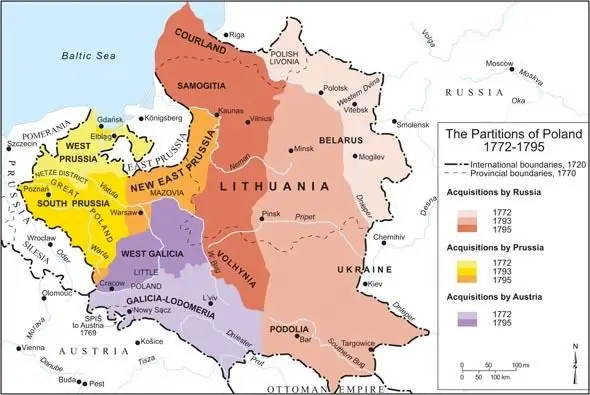
Belarus was also affected by the partitions of Poland in the 18th century, which divided the country among Russia, Prussia, and Austria. Belarus became part of the Russian Empire, which imposed its political and cultural domination over the region.
The Russian Empire also brought new culinary influences, such as Russian, Ukrainian, and German cuisines. Some of the dishes that were borrowed or influenced by these cuisines are draniki (potato pancakes), borsch (a beetroot soup), and vereshchaka (a pork stew with buckwheat) .
Belarus was Caught up in WW1 and WW2

Belarus was also involved in the World Wars of the 20th century, which caused immense suffering and loss for the Belarusian people. The World Wars also brought new challenges and opportunities for the Belarusian cuisine, as well as new influences, such as French, American, and Soviet cuisines.
Some of the dishes that were created or modified during these times are kotlety (meat patties), bulba (a potato casserole), and zrazy (stuffed meat rolls).
Belarus Achieved Independence in 1991
Belarus became an independent state in 1991, after the collapse of the Soviet Union. Since then, Belarus has been trying to preserve and promote its national identity and culture, as well as to adapt to the modern world.
Belarusian cuisine has also been undergoing changes and innovations, as well as rediscovering its roots and traditions. Some of the dishes that represent the contemporary Belarusian cuisine are kalduny (dumplings with various fillings), kholodnik (a cold soup made from kefir, cucumber, and herbs), and karavai (a round bread decorated with patterns).
As you can see, Belarusian cuisine is a rich and diverse culinary heritage that reflects the history of Belarus and its people. It is a cuisine that combines the old and the new, the simple and the sophisticated, the familiar and the exotic. It is a cuisine that deserves to be explored and enjoyed by anyone who visits this beautiful country.
How Belarus’s Climate and Geography Influences Belarusian Food
Belarusian food is influenced by the climate and geography of the country, as well as by its history and cultural ties with neighboring countries. Here are some of the main factors that shape Belarusian cuisine:
Climate:

Belarus has a temperate continental climate, with cold winters and warm summers. The average annual temperature is about 6°C, but it can vary from -20°C in winter to 30°C in summer. The climate affects the availability and preservation of food, as well as the preferences and habits of the people.
For example, Belarusians consume a lot of potatoes, which are easy to grow and store in cold conditions. They also prepare dishes that are hearty and warming, such as soups, stews, and casseroles. They also use a lot of dairy products, such as sour cream, cheese, and butter, which are rich in calories and nutrients.
Geography
Belarus is a landlocked country, with no access to the sea. Therefore, fish is not a common ingredient in Belarusian cuisine, except for freshwater fish from rivers and lakes, such as carp, pike, and perch. Belarus is also mostly flat, with low hills and plains.
The soil is fertile and suitable for growing cereals, such as rye, wheat, barley, and oats. These grains are used to make bread, pancakes, porridge, and beer.
Belarus also has a lot of forests, swamps, and meadows, which provide a variety of wild fruits, berries, mushrooms, and herbs. These are used to make jams, compotes, pickles, and sauces.
Understanding the Essence of Belarusian Food Recipes
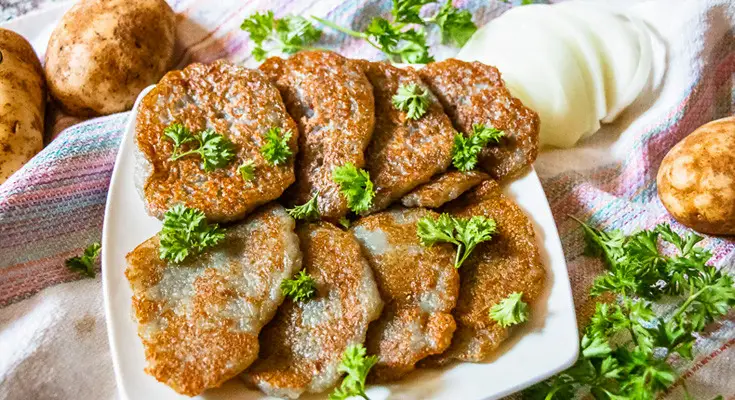
Belarus, a landlocked gem nestled in Eastern Europe, boasts a rich history and a surprisingly delightful cuisine. But what exactly sets Belarusian food apart from its neighbors?
Forget the bland and predictable – Belarusian cuisine is a symphony of unexpected flavors, hearty ingredients, and surprising simplicity. Here’s why it deserves a spot on your culinary adventure map:
A Celebration of the Land
Centuries of living off the land have shaped Belarusian cuisine into a love letter to local produce. Imagine fluffy potato draniki, crispy potato pancakes that are a national obsession . Forests generously offer mushrooms, berries, and fragrant herbs that find their way into soups, stews, and side dishes.
Cabbage, another local hero, features in hearty dishes like bigos, a savory mix of sauerkraut, meat, and vegetables. This focus on fresh, seasonal ingredients ensures that every bite bursts with the natural flavors of Belarus.
Comforting Classics with a Twist
Belarusian cuisine excels in comfort food, but with a unique twist. Take borscht, a staple across Eastern Europe. The Belarusian version features a symphony of colorful vegetables like beets, cabbage, and carrots, simmered in a rich broth.
But unlike its bolder cousins, the Belarusian borscht embraces a refreshing sourness. Another twist comes with mach kafka, a deconstructed potato dish.
Imagine grated potatoes layered with meat, onions, and a decadent amount of sour cream, baked to golden perfection. These hearty dishes are perfect for warming you up on a cold winter day, offering a taste of Belarusian comfort with a unique twist.
Dairy Delights
Milk and dairy products are cornerstones of Belarusian cuisine. Sour cream, a ubiquitous condiment, adds a delightful tang to savory dishes. Cottage cheese (tvorog) is enjoyed on its own or used in sweet and savory recipes.
Kefir, a fermented milk drink, is a refreshing and healthy beverage enjoyed throughout the day. This focus on dairy creates a unique creaminess and richness that sets Belarusian food apart.
A Symphony of Savory and Sweet
Belarusian cuisine isn’t afraid to embrace sweet and savory combinations. Blini, thin pancakes made from buckwheat or wheat flour, can be enjoyed with savory fillings like meat or mushrooms, or with sweet accompaniments like jam or honey.
Dishes like babka, a savory potato and meat pie, often feature a touch of sweetness, creating a delightful surprise for the taste buds. This unexpected interplay of sweet and savory flavors keeps things interesting and adds another layer of complexity to Belarusian food.
A Culinary Journey Through Time
Belarusian cuisine reflects the country’s rich history. Influences from neighboring Poland, Lithuania, and Russia can be found in dishes like sausage-making traditions and hearty stews. However, Belarus has also preserved its own culinary heritage, evident in dishes like draniki and mach kafka.
Every bite is a journey through time, offering a taste of the past alongside the present.
Traditional Belarus Food Recipes
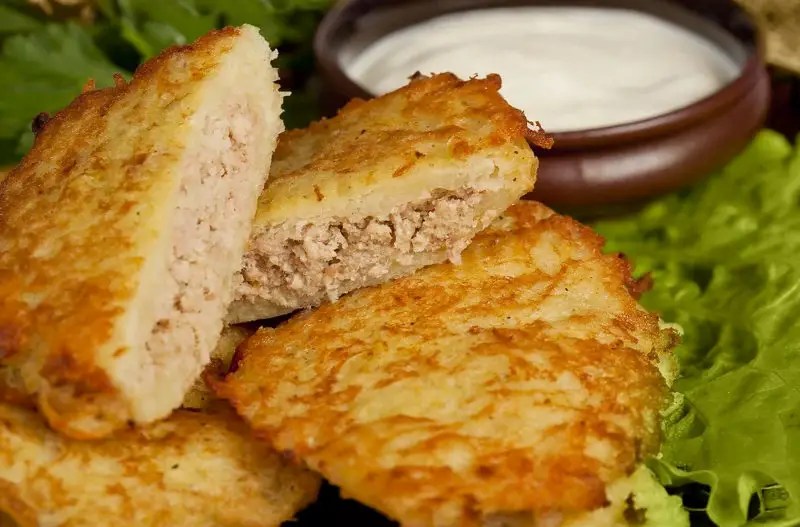
Belarusian cuisine is based on simple and hearty ingredients, such as potatoes, cereals, dairy products, meat, fish, mushrooms, and vegetables. Some of the most popular and delicious dishes are:
- Borscht: A beetroot soup with meat, cabbage, carrots, onions, garlic, and sour cream. It is usually served with rye bread or pampushki (garlic buns).
- Draniki: Thick potato pancakes that can be eaten plain or with various fillings, such as cheese, meat, mushrooms, or apples. They are often topped with sour cream or machanka (pork stew with pancakes).
- Kolduny: Potato dumplings stuffed with minced meat, mushrooms, cheese, or berries. They are boiled or fried and served with sour cream or butter.
- Vereshchaka: A pork stew with onions, garlic, and spices. It is cooked in a clay pot and served with buckwheat or rye bread.
- Kletski: Flour balls that can be made with or without eggs. They are boiled in water or broth and added to soups, stews, or casseroles.
- Tukmachi: A potato casserole with layers of meat, cheese, eggs, and herbs. It is baked in the oven and cut into slices.
- Galushki: A peasant dish made with flour, water, salt, and baking soda. The dough is rolled into thin strips and cut into small pieces. They are boiled in water or milk and served with butter, sugar, or honey.
- Poppy seed cakes: Sweet pastries made with yeast dough and filled with poppy seeds, nuts, raisins, and honey. They are baked in the oven and glazed with sugar or honey.
Take Me to The Recipes
What Are the Health Implications of Belarusian Cuisine?
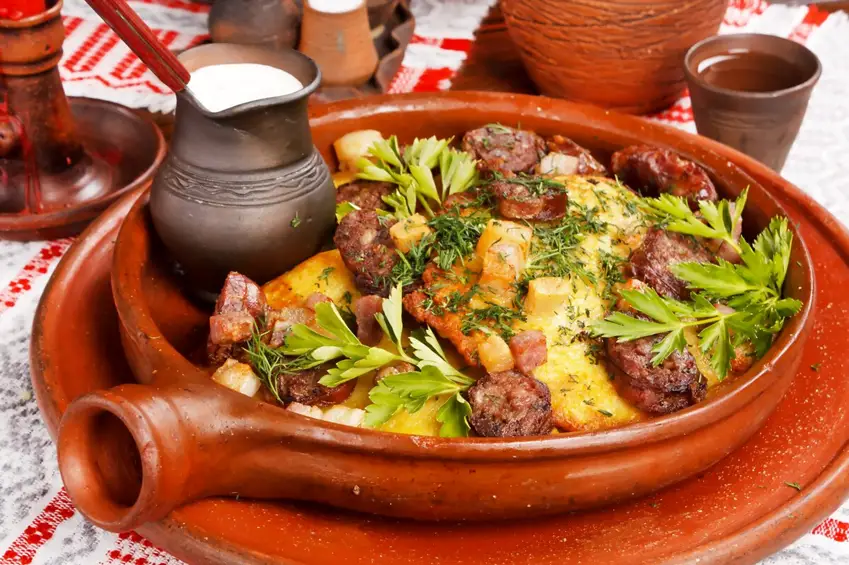
Belarusian cuisine is based on simple and hearty ingredients, such as potatoes, cereals, dairy products, meat, fish, mushrooms, and vegetables. These foods can provide a balanced diet, as they contain carbohydrates, proteins, fats, vitamins, minerals, and fiber. However, some aspects of Belarusian cuisine may also pose some health risks, such as:
- High consumption of animal fats: Many Belarusian dishes are cooked with lard, butter, or sour cream, which are rich in saturated fats and cholesterol. These fats can increase the risk of cardiovascular diseases, such as high blood pressure, atherosclerosis, and heart attack.
- Low consumption of fruits and fresh vegetables: Belarusian cuisine relies mostly on root vegetables, such as potatoes, beets, and carrots, which are often cooked or pickled. Fruits and fresh vegetables, such as salads, are not very common in the traditional diet. This may lead to a deficiency of some vitamins, antioxidants, and phytochemicals, which are important for preventing chronic diseases, such as cancer, diabetes, and inflammation.
- High consumption of salt and sugar: Belarusian cuisine uses a lot of salt and sugar to preserve and flavor food. Salt is added to soups, stews, pickles, and cheese, while sugar is added to jams, compotes, cakes, and pastries. Excessive intake of salt and sugar can cause problems such as high blood pressure, obesity, diabetes, tooth decay, and kidney damage.
Therefore, Belarusian cuisine can be enjoyed in moderation, but it is advisable to limit the intake of animal fats, salt, and sugar, and to increase the intake of fruits and fresh vegetables. It is also recommended to choose lean meats, such as poultry and fish, over fatty meats, such as pork and sausage.
Additionally, it is important to drink enough water and exercise regularly to maintain a healthy lifestyle.
Belarusian National Dish

Draniki, often hailed as the national dish of Belarus, encapsulates the essence of the country’s culinary identity. These golden, crispy potato pancakes are a staple in Belarusian households. Served with sour cream or applesauce, draniki are a versatile dish enjoyed for breakfast, lunch, or dinner.
The simplicity of the ingredients and the comforting flavors make draniki a symbol of Belarusian hospitality and warmth.
Exploring Belarusian Food Ingredients: The Flavors of Belarusian Cuisine
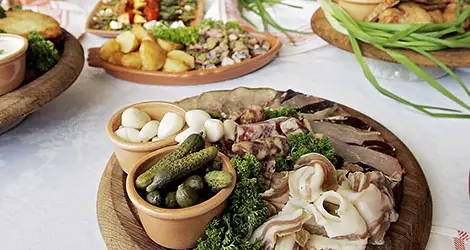
The flavors of Belarusian cuisine are a symphony of tastes, textures, and aromas. Potatoes, the undisputed star, lend their earthy sweetness to dishes like draniki and kolduny.
Pork, a common meat choice, imparts richness to stews and sausages. Forest bounty, including mushrooms and berries, adds a touch of wild freshness. Dairy products, particularly sour cream, enhance the creaminess of many dishes.
Delving into Belarusian ingredients unveils a culinary palette that celebrates the bounty of nature.
Belarusian Recipes – Great Examples to Try at Home
Embark on a culinary adventure with these authentic Belarusian recipes, bringing the flavors of the region to your kitchen.
Unleash your inner chef and savor the flavors of Belarus with these recipes that capture the heart and soul of this Eastern European culinary gem.
Belarus Food – Babka

A Belarusian Culinary Tradition
Babka, a beloved dish in Belarusian cuisine, holds a special place in the hearts and kitchens of the region. Originating from the rural landscapes of Belarus, this hearty potato pie showcases the resourcefulness of the Belarusian people, who have long relied on the abundance of locally available ingredients.
Belarus Food – Babka Ingredients
- 4 large potatoes, peeled and grated
- 1 onion, finely chopped
- 200g bacon, diced
- 2 eggs
- 1 cup all-purpose flour
- Salt and pepper to taste
- 1/2 cup vegetable oil
Belarus Food – Babka Recipe
1. Prepare the Ingredients
- Grate the peeled potatoes using a coarse grater.
- Finely chop the onion.
- Dice the bacon into small pieces.
2. Mix the Ingredients
- In a large mixing bowl, combine the grated potatoes, chopped onion, diced bacon, eggs, and flour.
- Season the mixture with salt and pepper to taste.
3. Form the Pie
- Preheat the oven to 180°C (350°F).
- Grease a baking dish with vegetable oil.
- Pour the potato mixture into the dish, spreading it evenly.
4. Bake the Babka
- Bake in the preheated oven for 40-45 minutes or until the top is golden brown and the potatoes are cooked through.
5. Serve and Enjoy
- Allow the babka to cool for a few minutes before slicing.
- Serve warm and savor the flavors of this traditional Belarusian potato pie.
Serving Size: 6 people
Cooking Time: 45 minutes
Calories (per serving): Approximately 350 calories
Babka, with its rustic charm and wholesome ingredients, epitomizes the essence of Belarusian home cooking. As you relish each bite, you’re transported to the heart of Belarus, where tradition and flavor come together in a culinary masterpiece.
Belarus Food – Bankucha

A Belarusian Winter Delicacy
Bankucha, a traditional Belarusian winter dish, originates from the rural regions where resourcefulness and the need for warmth during cold months shaped the culinary landscape.
This hearty cabbage soup not only reflects the resilience of the Belarusian people but also serves as a testament to the rich agricultural heritage of the region.
Belarus Food – Bankucha Ingredients
- 1 medium-sized cabbage, shredded
- 2 large potatoes, peeled and diced
- 1 carrot, grated
- 1 onion, finely chopped
- 200g pork belly, diced
- 1 bay leaf
- Salt and pepper to taste
- Sour cream for serving
Belarus Food – Bankucha Recipe:
1. Prepare the Ingredients
- Shred the cabbage.
- Peel and dice the potatoes.
- Grate the carrot.
- Finely chop the onion.
- Dice the pork belly.
2. Cook the Pork
- In a large pot, sauté the diced pork belly until browned.
3. Add Vegetables
- Add the chopped onion to the pot and cook until softened.
- Stir in the shredded cabbage, diced potatoes, grated carrot, bay leaf, salt, and pepper.
4. Simmer the Soup
- Pour enough water into the pot to cover the ingredients.
- Bring the mixture to a boil, then reduce the heat and simmer for 30-40 minutes or until the vegetables are tender.
5. Serve
- Ladle the bankucha into bowls.
- Serve with a dollop of sour cream on top.
Serving Size: 4-6 people
Cooking Time: 40 minutes
Calories (per serving): Approximately 250 calories
Bankucha, with its nourishing ingredients and comforting warmth, embodies the spirit of Belarusian winter cuisine. As you enjoy this delicious cabbage soup, you’re savoring a taste of the history and traditions that have shaped Belarusian culinary heritage.
Belarus Food – Blini (thin pancakes)

Blini (Thin Pancakes): A Taste of Belarusian Comfort
History and Background: Blini, thin pancakes with roots in Belarus, hold a special place in the nation’s culinary heritage. Originating from the times when grains were a staple in the Belarusian diet, blini have evolved into a cherished comfort food.
Often enjoyed during festivals, holidays, and family gatherings, these delicate pancakes symbolize warmth and togetherness in Belarusian households. The preparation of blini varies across regions, showcasing the diverse culinary traditions within the country.
Ingredients:
- 1 cup all-purpose flour
- 1 cup milk
- 1 large egg
- 1 tablespoon melted butter
- 1/2 teaspoon salt
- Additional butter for cooking
Recipe:
Making the Blini Batter
- Combine Dry Ingredients:
- In a mixing bowl, whisk together the flour and salt.
- Add Wet Ingredients:
- Add the egg, melted butter, and half of the milk to the dry ingredients.
- Whisk until the batter is smooth.
- Thin Out the Batter:
- Gradually add the remaining milk to the batter, whisking continuously, until a thin consistency is achieved. The batter should be slightly thicker than heavy cream.
Cooking the Blini
- Preheat the Pan:
- Heat a non-stick skillet or griddle over medium heat.
- Add a small amount of butter to coat the surface.
- Pour and Swirl:
- Pour a small amount of batter onto the hot surface, swirling the pan to spread it thinly.
- Cook Until Bubbles Form:
- Cook the blini until bubbles appear on the surface, then flip with a spatula.
- Cook the Other Side:
- Cook the other side for a brief moment until golden brown.
- Repeat:
- Repeat the process with the remaining batter, adding butter as needed.
Serving the Blini
- Stack and Serve Warm:
- Stack the blini on a plate and serve warm.
- Optional toppings include sour cream, jam, honey, or caviar for a more decadent touch.
Serving Size: 4 people
Estimated Cooking Time: 30 minutes
Calories (per serving): Approximately 150 calories
Belarus Food – Borscht
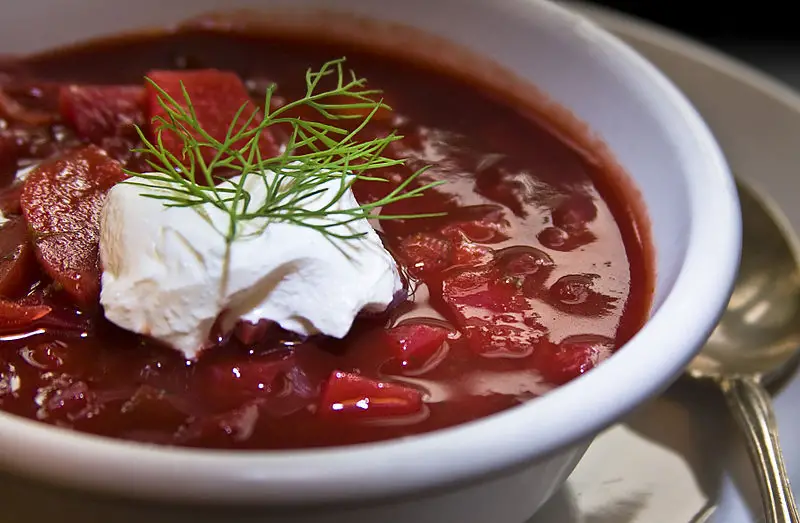
The Heartwarming Beet Soup of Belarus
Borscht, a culinary gem of Belarus, has deep historical roots and is a cherished part of Eastern European cuisine.
Originating in the region, this vibrant beet soup is a testament to the resourcefulness of Belarusian cooks, utilizing locally grown vegetables and creating a dish that warms both body and soul.
Belarus Food – Borscht Ingredients
- 3 medium beets, peeled and grated
- 1 large potato, peeled and diced
- 1 carrot, peeled and grated
- 1 onion, finely chopped
- 2 cloves garlic, minced
- 1/2 small cabbage, shredded
- 2 tablespoons tomato paste
- 1 bay leaf
- 4 cups beef or vegetable broth
- Salt and pepper to taste
- Sour cream and fresh dill for garnish
Belarus Food – Borscht Recipe
1. Prepare the Ingredients
- Peel and grate the beets.
- Peel and dice the potato.
- Peel and grate the carrot.
- Finely chop the onion.
- Mince the garlic.
- Shred the cabbage.
2. Sauté Vegetables
- In a large pot, sauté the chopped onion in oil until translucent.
- Add the grated beets, carrots, and minced garlic. Cook until the vegetables are softened.
3. Add Tomato Paste and Broth
- Stir in the tomato paste, coating the vegetables.
- Pour in the broth, add the diced potato, shredded cabbage, and bay leaf.
- Season with salt and pepper to taste.
4. Simmer
- Bring the mixture to a boil, then reduce the heat and simmer for 20-30 minutes or until the vegetables are tender.
5. Serve
- Remove the bay leaf.
- Ladle the borscht into bowls.
- Garnish with a dollop of sour cream and a sprinkle of fresh dill.
Serving Size: 4-6 people
Cooking Time: 30 minutes
Calories (per serving): Approximately 150 calories
Borscht, with its vibrant color and robust flavor, encapsulates the spirit of Belarusian hospitality. As you enjoy this beet soup, you’re indulging in a culinary tradition that has been passed down through generations, bringing warmth and nourishment to Belarusian tables.
Belarus Food – Draniki
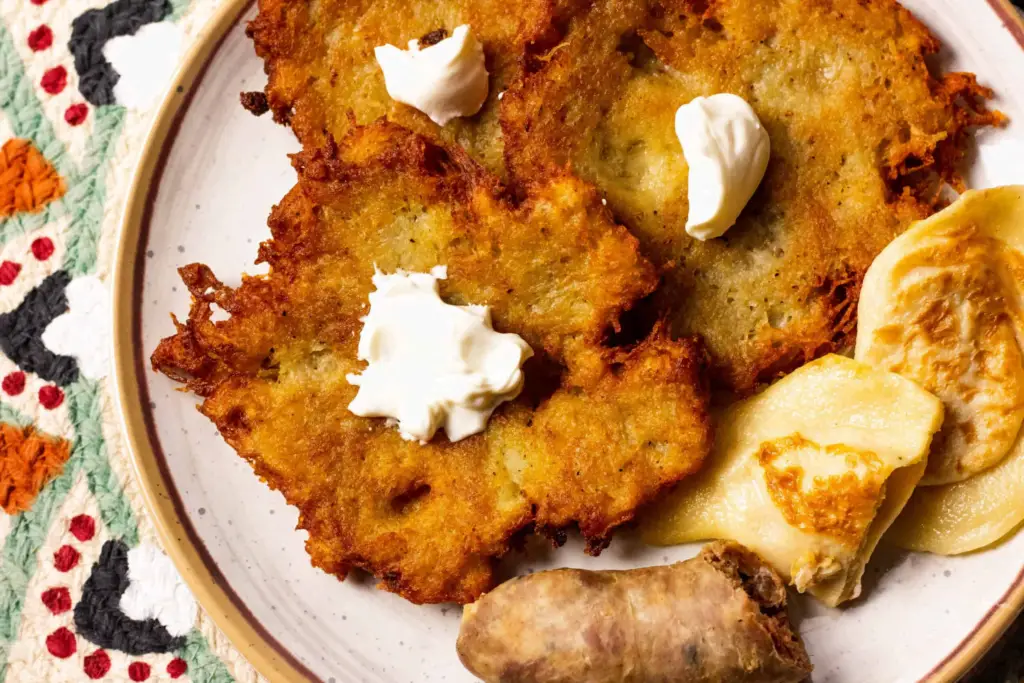
Belarusian Potato Pancakes with a Rich Heritage
Draniki, often hailed as Belarus’s national dish, holds a special place in the country’s culinary heritage.
Originating from the agricultural heartland of Belarus, these golden and crispy potato pancakes are more than just a meal—they represent the resilience and resourcefulness of the Belarusian people throughout history.
Belarus Food – Draniki Ingredients
- 6 large potatoes, peeled
- 1 onion
- 2 eggs
- 2 tablespoons all-purpose flour
- Salt and pepper to taste
- Vegetable oil for frying
- Sour cream for serving
Belarus Food – Draniki Ingredients Recipe
1. Prepare the Ingredients
- Grate the peeled potatoes using a fine grater.
- Finely chop the onion.
2. Drain Excess Liquid
- Place the grated potatoes in a clean kitchen towel and squeeze out the excess liquid.
3. Mix the Ingredients
- In a large bowl, combine the grated potatoes, chopped onion, eggs, flour, salt, and pepper. Mix well to form a batter.
4. Heat the Oil
- In a skillet, heat vegetable oil over medium-high heat.
5. Fry the Pancakes
- Spoon the potato mixture into the hot oil, forming pancakes. Flatten with a spatula.
- Fry until golden brown on both sides, ensuring the potatoes are cooked through.
6. Serve
- Remove the pancakes and place them on a paper towel to absorb excess oil.
- Serve hot with a dollop of sour cream on top.
Serving Size: 4 people
Cooking Time: 30 minutes
Calories (per serving): Approximately 200 calories
Draniki’s simplicity belies its significance in Belarusian culture. As you savor these crispy delights, you’re partaking in a culinary tradition that has been passed down through generations, celebrating the humble potato’s central role in Belarusian cuisine.
Belarus Food – Galushki

A Belarusian Dumpling Delicacy
Galushki, a beloved Belarusian dish, traces its roots back to the country’s rural heartland. These simple and satisfying boiled dumplings are a testament to the resourcefulness of Belarusian cooks, who traditionally crafted meals using readily available ingredients.
Galushki, often enjoyed as a comforting side or main dish, reflects the enduring culinary heritage of Belarus.
Belarus Food – Ingredients:
- 2 cups all-purpose flour
- 2 eggs
- 1/2 cup water
- Salt to taste
- Butter for serving
Belarus Food – Galushki Recipe
1. Prepare the Ingredients
- In a mixing bowl, combine the flour and a pinch of salt.
- Make a well in the center and crack the eggs into it.
2. Form the Dough
- Gradually incorporate the flour into the eggs, adding water as needed.
- Knead the dough until smooth and elastic.
3. Roll and Cut
- On a floured surface, roll the dough into a thin sheet.
- Cut small squares or circles from the sheet.
4. Shape the Dumplings
- Take each square or circle and fold it in half, creating a triangle or semi-circle.
- Press the edges to seal, forming dumplings.
5. Boil the Galushki
- Bring a large pot of salted water to a boil.
- Drop the galushki into the boiling water and cook until they float to the surface.
6. Serve
- Using a slotted spoon, remove the galushki from the water.
- Serve hot, topped with a generous pat of butter.
Serving Size: 4 people
Cooking Time: 20 minutes
Calories (per serving): Approximately 250 calories
Galushki, with its simple yet satisfying nature, captures the essence of Belarusian comfort food. As you enjoy these tender dumplings, you’re experiencing a taste of Belarus—a country where culinary traditions have been lovingly preserved through generations.
Belarus Food – Grechaniki

History and Background of Grechaniki: A Belarusian Delicacy
Grechaniki, a beloved dish in Belarusian cuisine, has a rich history deeply rooted in the country’s agricultural traditions. The name itself is derived from “grechka,” meaning buckwheat, a staple grain in Belarus.
Buckwheat cultivation has been a fundamental part of Belarusian agriculture for centuries, making it a natural choice for creating hearty and flavorful dishes. Grechaniki are traditional buckwheat pancakes that have evolved over time to become a symbol of Belarusian culinary heritage.
These pancakes are not only delicious but also reflect the resourcefulness of Belarusian cooks in making the most of locally available ingredients.
Belarus Food – Grechaniki Ingredients:
- 2 cups buckwheat flour
- 1 cup all-purpose flour
- 2 eggs
- 2 cups milk
- 1 cup water
- 1 teaspoon salt
- 1 tablespoon sugar
- Butter or oil for frying
Belarus Food – Grechaniki Recipe:
1. Prepare the Batter:
- In a large mixing bowl, combine buckwheat flour, all-purpose flour, salt, and sugar.
- In a separate bowl, whisk together eggs, milk, and water.
- Gradually pour the wet ingredients into the dry ingredients, whisking continuously to avoid lumps.
- Let the batter rest for 30 minutes to allow the buckwheat to absorb the liquid.
2. Cook the Grechaniki:
- Heat a skillet or griddle over medium heat and add a small amount of butter or oil.
- Pour a ladleful of batter onto the hot surface, spreading it thinly to form a pancake.
- Cook until bubbles form on the surface, then flip and cook the other side until golden brown.
- Repeat until all the batter is used, adding more butter or oil as needed.
3. Serve and Enjoy:
- Grechaniki are traditionally served with sour cream, yogurt, or a dollop of honey.
- Garnish with fresh herbs, such as dill or parsley, for added flavor and visual appeal.
Serving Information:
- Serves: 4 people
- Cooking Time: Approximately 45 minutes
- Estimated Calories: 300 calories per serving (calories may vary based on specific ingredients and serving sizes)
Belarus Food – Herring Under a Fur Coat

History and Background of Herring Under a Fur Coat: A Belarusian Delicacy
Herring Under a Fur Coat, known as “Shuba” in Russian and “Селёдка под шубой” in Belarusian, is a beloved dish with roots in both Russian and Belarusian culinary traditions. This layered salad has become a festive staple, especially during holidays and celebrations.
The name “Fur Coat” refers to the salad’s visually striking layers, resembling the layers of a winter coat. The dish typically includes herring, potatoes, carrots, beets, and mayonnaise, creating a harmonious blend of flavors and textures that has stood the test of time in Belarusian gastronomy.
Belarus Food – Herring Under a Fur Coat Ingredients:
- 2 large potatoes, boiled and diced
- 2 large carrots, boiled and grated
- 2 medium beets, boiled and grated
- 1 large onion, finely chopped
- 4 pickled herring fillets, finely chopped
- 1 cup mayonnaise
- Salt and pepper to taste
- Fresh dill for garnish
Belarus Food – Herring Under a Fur Coat Recipe:
1. Prepare the Ingredients:
- Boil the potatoes, carrots, and beets until they are tender. Allow them to cool before handling.
- Dice the boiled potatoes, grate the carrots, and finely chop the boiled beets.
- Finely chop the onion and pickled herring fillets.
2. Assemble the Layers:
- In a deep serving dish, start with a layer of diced potatoes as the base.
- Spread a layer of grated carrots over the potatoes.
- Add a layer of finely chopped onions, followed by a layer of chopped herring.
- Finish with a layer of grated beets on top.
3. Add Mayonnaise and Season:
- Generously spread mayonnaise over the top layer, covering the entire surface.
- Season with salt and pepper to taste.
4. Let It Chill:
- Cover the dish with plastic wrap and refrigerate for at least 4 hours or overnight to allow the flavors to meld.
5. Garnish and Serve:
- Before serving, garnish the salad with fresh dill.
- Serve chilled and enjoy this delightful and visually appealing Belarusian delicacy.
Serving Information:
- Serves: 6 people
- Cooking Time: Approximately 1 hour (including boiling time for vegetables)
- Estimated Calories: 350 calories per serving (calories may vary based on specific ingredients and serving sizes)
Belarus Food – Holodnik (Cold Vegetable Soup)
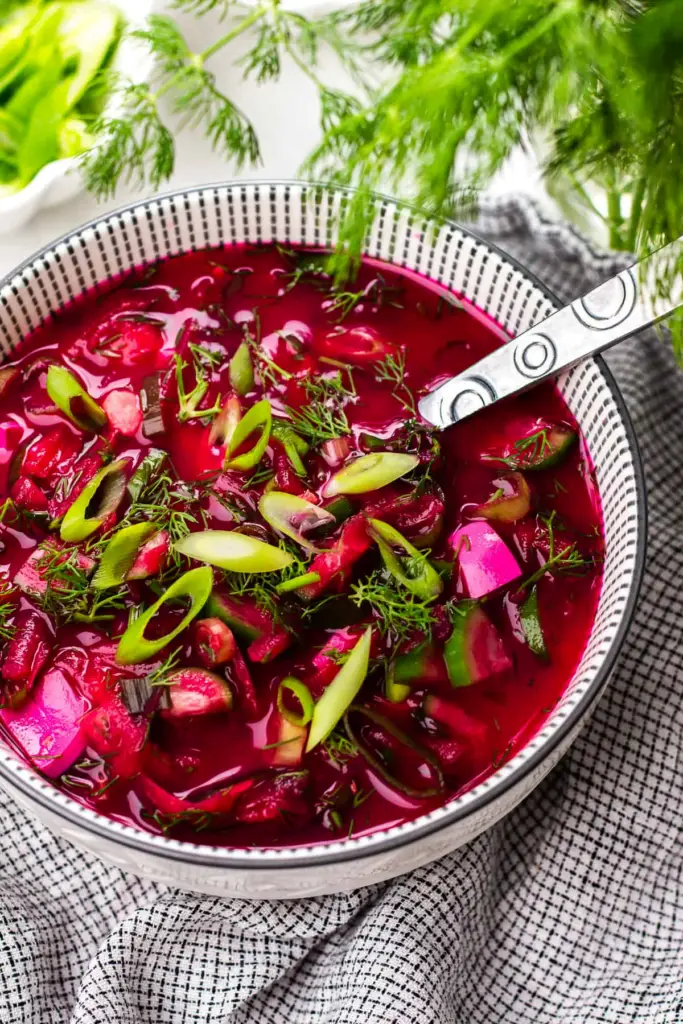
History and Background of Holodnik: A Refreshing Belarusian Summer Soup
Holodnik, a traditional Belarusian cold soup, is a refreshing and nutritious dish that originates from the Eastern European region. It has been a popular choice, especially during hot summer days, offering a light and cooling option for locals.
The soup’s roots can be traced back to the traditional Russian dish Okroshka, but Holodnik has evolved with unique Belarusian variations. It typically features beets, cucumbers, radishes, and fresh herbs, creating a vibrant and flavorful concoction that captures the essence of Belarusian cuisine.
Belarus Food – Holodnik Ingredients:
- 2 medium beets, boiled and grated
- 2 medium cucumbers, finely chopped
- 3 hard-boiled eggs, chopped
- 4 medium potatoes, boiled and diced
- 1 bunch green onions, finely sliced
- 1 bunch fresh dill, chopped
- 1 liter kefir (fermented milk) or buttermilk
- 1 liter cold water
- Salt and pepper to taste
- Sour cream for serving
Belarus Food – Holodnik Recipe:
1. Prepare the Ingredients:
- Boil and grate the beets.
- Finely chop the cucumbers, hard-boiled eggs, and green onions.
- Boil and dice the potatoes.
- Chop the fresh dill.
2. Mix the Vegetables:
- In a large mixing bowl, combine the grated beets, chopped cucumbers, eggs, potatoes, green onions, and dill.
3. Add Kefir and Water:
- Pour in the kefir or buttermilk and cold water, ensuring a good balance of liquid for the desired consistency.
- Mix well and season with salt and pepper to taste.
4. Chill the Soup:
- Cover the bowl with plastic wrap and refrigerate for at least 2 hours to allow the flavors to meld and the soup to chill thoroughly.
5. Serve:
- Ladle the chilled Holodnik into bowls.
- Optionally, garnish with additional fresh dill and serve with a dollop of sour cream.
Serving Information:
- Serves: 4 people
- Cooking Time: Approximately 30 minutes (excluding chilling time)
- Estimated Calories: 200 calories per serving (calories may vary based on specific ingredients and serving sizes)
Belarus Food – Kalduny

History and Background of Kalduny: Belarusian Dumplings with a Rich Heritage
Kalduny, a beloved dish in Belarusian cuisine, are dumplings with a rich history and cultural significance. Originating from the region’s traditional culinary practices, Kalduny are a testament to the resourcefulness of Belarusian cooks.
These dumplings typically feature a filling of meat, mushrooms, or potatoes encased in a delicate dough. Kalduny have been a staple in Belarusian households for generations, showcasing the importance of hearty, filling dishes in the region’s cuisine.
Whether served as a comforting family meal or part of festive occasions, Kalduny remain a cherished part of Belarusian culinary heritage.
Belarus Food – Kalduny Ingredients:
Dough:
- 2 cups all-purpose flour
- 1 cup warm water
- 1 egg
- 1/2 teaspoon salt
Filling:
- 300g minced meat (pork, beef, or a mix)
- 1 onion, finely chopped
- Salt and pepper to taste
- Optional: mushrooms, boiled potatoes, or cabbage for alternative fillings
Belarus Food – Kalduny Recipe:
1. Prepare the Dough:
- In a mixing bowl, combine the flour and salt.
- Make a well in the center and add the egg and warm water.
- Gradually mix the ingredients until a dough forms. Knead the dough on a floured surface until smooth.
- Cover and let it rest for 30 minutes.
2. Prepare the Filling:
- In a separate bowl, mix the minced meat with finely chopped onions.
- Season the filling with salt and pepper to taste.
- Optionally, prepare alternative fillings like mushrooms, boiled potatoes, or cabbage.
3. Assemble the Kalduny:
- Roll out the dough on a floured surface to a thickness of about 1/8 inch.
- Cut out circles using a round cutter or a glass.
- Place a spoonful of the meat filling in the center of each circle.
4. Shape and Seal:
- Fold the circle in half, creating a half-moon shape.
- Pinch the edges to seal the dumpling, ensuring there are no openings.
5. Cook the Kalduny:
- Bring a large pot of salted water to a boil.
- Carefully drop the Kalduny into the boiling water and cook until they float to the surface.
6. Serve:
- Remove the Kalduny with a slotted spoon and serve hot.
- Optionally, serve with melted butter, sour cream, or a savory sauce.
Serving Information:
- Serves: 4 people
- Cooking Time: Approximately 1 hour
- Estimated Calories: 350 calories per serving (calories may vary based on specific ingredients and serving sizes)
Belarus Food – Kamyanitsa

Pancakes with a Historic Twist
Kamyanitsa, a traditional dish in Belarusian cuisine, represents a delightful blend of history and culinary creativity. Originating from the rustic charm of Belarusian villages, the name “Kamyanitsa” refers to an old-style wooden townhouse, reflecting the historical context of the dish.
These stuffed pancakes have been cherished for generations, often enjoyed during festive occasions and family gatherings. Kamyanitsa showcases the resourcefulness of Belarusian cooks who transform simple ingredients into a flavorful and hearty dish that pays homage to the region’s cultural heritage.
Belarus Food – Kamyanitsa Ingredients:
Pancakes:
- 2 cups all-purpose flour
- 2 eggs
- 2 cups milk
- 1/2 teaspoon salt
- Butter or oil for frying
Filling:
- 300g minced meat (pork, beef, or a mix)
- 1 onion, finely chopped
- 2 cloves garlic, minced
- Salt and pepper to taste
- 1 cup cooked rice
- Fresh dill for garnish
Belarus Food – Kamyanitsa Recipe:
1. Prepare the Pancake Batter:
- In a mixing bowl, whisk together flour, eggs, milk, and salt until a smooth batter forms.
- Allow the batter to rest for 30 minutes.
2. Make the Filling:
- In a pan, sauté finely chopped onions and minced garlic until softened.
- Add minced meat to the pan and cook until browned.
- Season with salt and pepper to taste.
- Stir in cooked rice and mix well. Remove from heat.
3. Cook the Pancakes:
- Heat a skillet or griddle over medium heat and add a small amount of butter or oil.
- Pour a ladleful of pancake batter onto the hot surface and spread it thinly.
- Cook until bubbles form on the surface, then flip and cook the other side until golden brown.
- Repeat until all the batter is used.
4. Assemble Kamyanitsa:
- Place a spoonful of the meat and rice filling in the center of each pancake.
- Fold the sides of the pancake over the filling, creating a rectangular shape.
- Secure the edges to form a stuffed pancake.
5. Garnish and Serve:
- Garnish Kamyanitsa with fresh dill for added flavor and visual appeal.
- Serve hot, optionally with sour cream or a savory sauce.
Serving Information:
- Serves: 4 people
- Cooking Time: Approximately 1 hour
- Estimated Calories: 400 calories per serving (calories may vary based on specific ingredients and serving sizes)
Belarus Food – Karavai

History and Background of Karavai: Belarusian Festive Bread with Symbolic Significance
Karavai, a symbol of celebration in Belarusian culinary traditions, is a festive bread that holds cultural and historical significance. Originating from the rich heritage of Belarus, Karavai is often prepared for special occasions, including weddings and holidays.
The bread’s intricate decorations and symbolic shapes reflect the country’s cultural motifs and the importance of communal celebrations. Baked with care and adorned with traditional patterns, Karavai represents the warmth of hospitality and the unity of families and communities in Belarus.
Belarus Food – Karavai Ingredients:
- 4 cups all-purpose flour
- 2 teaspoons active dry yeast
- 1 cup warm milk
- 1/2 cup sugar
- 1/2 cup unsalted butter, melted
- 2 eggs
- 1/2 teaspoon salt
- Raisins or candied fruits for decoration
Belarus Food – Karavai Recipe:
1. Activate the Yeast:
- In a bowl, combine warm milk, sugar, and active dry yeast. Allow it to sit for 5-10 minutes until the yeast activates and becomes frothy.
2. Mix the Dough:
- In a large mixing bowl, combine the activated yeast mixture with flour, melted butter, eggs, and salt.
- Knead the dough until it becomes smooth and elastic. Cover and let it rise in a warm place for about 1-2 hours or until doubled in size.
3. Shape the Karavai:
- Punch down the risen dough and divide it into two portions.
- From one portion, shape a large round base for the Karavai.
- From the other portion, shape decorative elements like braids, flowers, or birds to adorn the bread.
4. Assemble and Decorate:
- Place the shaped decorative elements on top of the round base, attaching them securely.
- Use raisins or candied fruits to embellish the bread, creating intricate patterns.
5. Bake:
- Preheat the oven to 350°F (180°C).
- Carefully transfer the assembled Karavai onto a baking sheet.
- Bake for 25-30 minutes or until the bread is golden brown and sounds hollow when tapped.
6. Serve:
- Allow the Karavai to cool before slicing and serving.
- Share this symbolic bread with loved ones during festive occasions.
Serving Information:
- Serves: 8 people
- Cooking Time: Approximately 2.5 hours (including rising time and baking)
- Estimated Calories: 300 calories per serving (calories may vary based on specific ingredients and serving sizes)
Belarus Food – Kasha
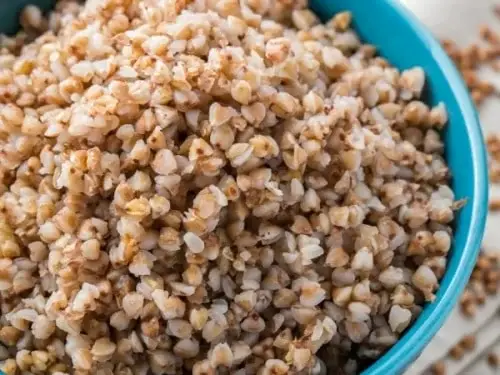
History and Background of Kasha: Belarusian Comfort in a Bowl
Kasha, a staple in Belarusian cuisine, traces its origins to ancient times, reflecting the culinary history of the region. Kasha refers to a dish made from various grains, with buckwheat being the most common in Belarus.
This versatile and nutritious dish has been a dietary mainstay, offering sustenance to generations of Belarusians. Often served as a side dish or a hearty meal, kasha embodies the simplicity and nourishment deeply valued in Belarusian culinary traditions.
Belarus Food – Kasha Ingredients:
- 1 cup buckwheat groats
- 2 cups water
- 2 tablespoons butter
- 1 onion, finely chopped
- 2 cups broth (vegetable or chicken)
- Salt and pepper to taste
- Fresh parsley for garnish (optional)
Belarus Food – Kasha Recipe:
1. Rinse and Toast the Buckwheat:
- Rinse the buckwheat groats under cold water.
- In a dry pan, toast the rinsed buckwheat over medium heat for 3-5 minutes, stirring occasionally.
2. Sauté Onions:
- In the same pan, melt 1 tablespoon of butter.
- Add finely chopped onions and sauté until they are translucent.
3. Cook the Buckwheat:
- Add the toasted buckwheat to the pan and stir to combine with the onions.
- Pour in the broth, season with salt and pepper, and bring to a boil.
- Reduce the heat to low, cover, and simmer for 15-20 minutes or until the buckwheat is tender and has absorbed the liquid.
4. Fluff and Finish:
- Remove the pan from heat and let it sit, covered, for an additional 5 minutes.
- Fluff the kasha with a fork and stir in the remaining tablespoon of butter.
5. Garnish and Serve:
- Optionally, garnish the kasha with fresh parsley for a burst of color and flavor.
- Serve hot as a side dish or a comforting main course.
Serving Information:
- Serves: 4 people
- Cooking Time: Approximately 25 minutes
- Estimated Calories: 200 calories per serving (calories may vary based on specific ingredients and serving sizes)
Belarus Food – Kletski

History and Background of Kletski: Belarusian Dumplings with Heritage
Kletski, a cherished Belarusian dish, holds deep roots in the country’s culinary heritage. These dumplings, made from simple ingredients, have been a source of comfort and sustenance for generations.
Originating from the rural regions of Belarus, Kletski are a testament to the resourcefulness of Belarusian cooks who transform basic staples into a delicious and satisfying meal.
Whether served with savory or sweet fillings, Kletski showcase the culinary creativity and cultural richness of Belarus.
Belarus Food – Kletski Ingredients:
Dough:
- 2 cups all-purpose flour
- 1/2 cup water
- 1 egg
- 1/2 teaspoon salt
Filling:
- 300g mashed potatoes
- 1 onion, finely chopped
- Salt and pepper to taste
Belarus Food – Kletski Recipe:
1. Prepare the Dough:
- In a mixing bowl, combine the flour and salt.
- Make a well in the center and add the egg and water.
- Gradually mix the ingredients until a dough forms. Knead the dough on a floured surface until smooth.
- Cover and let it rest for 30 minutes.
2. Make the Filling:
- Boil and mash the potatoes.
- In a pan, sauté finely chopped onions until translucent.
- Mix sautéed onions with mashed potatoes and season with salt and pepper.
3. Shape and Fill Kletski:
- Roll out the dough on a floured surface and cut it into small squares.
- Place a spoonful of the potato filling in the center of each square.
- Fold the dough over the filling to form a triangle, pressing the edges to seal.
4. Cook the Kletski:
- Bring a large pot of salted water to a boil.
- Carefully drop the Kletski into the boiling water and cook until they float to the surface.
5. Serve:
- Remove the Kletski with a slotted spoon and serve hot.
- Optionally, serve with melted butter, sour cream, or a savory sauce.
Serving Information:
- Serves: 4 people
- Cooking Time: Approximately 1 hour
- Estimated Calories: 250 calories per serving (calories may vary based on specific ingredients and serving sizes)
Belarus Food – Kolduny
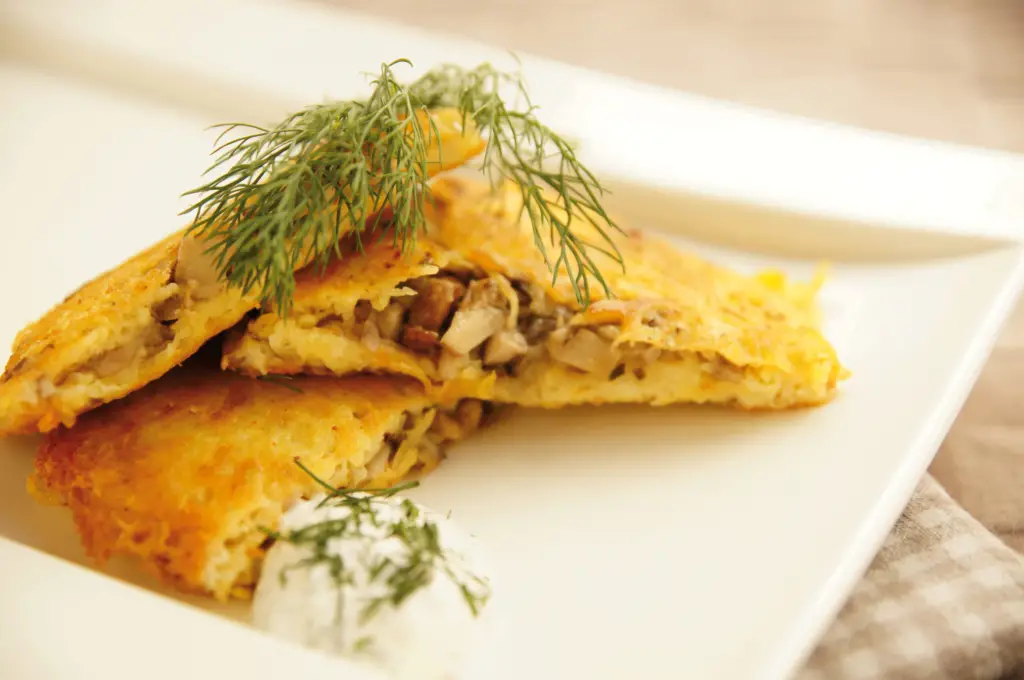
History and Background of Kolduny: Belarusian Dumplings with Culinary Heritage
Kolduny, a beloved dish in Belarusian cuisine, boasts a rich history and cultural significance. These dumplings, resembling the more famous pierogi, have been a staple in Belarusian households for centuries.
Kolduny’s origins can be traced back to the medieval times, making them a symbol of traditional Belarusian cooking. The dish showcases the country’s agricultural roots, using simple ingredients to create flavorful and hearty dumplings that reflect the warmth of Belarusian hospitality.
Belarus Food – Kolduny Ingredients:
Dough:
- 2 cups all-purpose flour
- 1/2 cup water
- 1 egg
- 1/2 teaspoon salt
Filling:
- 300g minced meat (pork, beef, or a mix)
- 1 onion, finely chopped
- 2 cloves garlic, minced
- Salt and pepper to taste
- Optional: mushrooms, boiled potatoes, or cabbage for alternative fillings
Belarus Food – Kolduny Recipe:
1. Prepare the Dough:
- In a mixing bowl, combine the flour and salt.
- Make a well in the center and add the egg and water.
- Gradually mix the ingredients until a dough forms. Knead the dough on a floured surface until smooth.
- Cover and let it rest for 30 minutes.
2. Make the Filling:
- In a pan, sauté finely chopped onions and minced garlic until softened.
- Add minced meat to the pan and cook until browned.
- Season with salt and pepper to taste.
- Optionally, prepare alternative fillings like mushrooms, boiled potatoes, or cabbage.
3. Shape and Fill Kolduny:
- Roll out the dough on a floured surface and cut it into small circles.
- Place a spoonful of the meat filling in the center of each circle.
- Fold the dough over the filling to form a half-moon shape, pressing the edges to seal.
4. Cook the Kolduny:
- Bring a large pot of salted water to a boil.
- Carefully drop the Kolduny into the boiling water and cook until they float to the surface.
5. Serve:
- Remove the Kolduny with a slotted spoon and serve hot.
- Optionally, serve with melted butter, sour cream, or a savory sauce.
Serving Information:
- Serves: 4 people
- Cooking Time: Approximately 1 hour
- Estimated Calories: 350 calories per serving (calories may vary based on specific ingredients and serving sizes)
Belarus Food – Lazanki

History and Background of Lazanki: Belarusian Noodle Dish with Traditional Roots
Lazanki, a cherished Belarusian noodle dish, holds a special place in the country’s culinary traditions. With roots deeply embedded in the rural kitchens of Belarus, lazanki reflects the simplicity and resourcefulness of traditional Belarusian cooking.
This dish, often made with homemade noodles and a variety of available ingredients, showcases the importance of hearty and comforting meals in Belarusian households. Lazanki continues to be a symbol of family gatherings and the warmth of home-cooked food.
Belarus Food – Lazanki Ingredients:
- 2 cups all-purpose flour
- 2 eggs
- 1/2 cup water
- 1 teaspoon salt
- 200g bacon or pork belly, diced
- 1 large onion, finely chopped
- 1 cup sour cream
- Salt and pepper to taste
- Fresh dill for garnish
Belarus Food – Lazanki Recipe:
1. Prepare the Noodles:
- In a large mixing bowl, combine the flour and salt.
- Make a well in the center and add the eggs and water.
- Gradually mix the ingredients until a dough forms. Knead the dough on a floured surface until smooth.
- Roll out the dough and cut it into thin, flat noodles.
2. Cook the Noodles:
- Bring a pot of salted water to a boil.
- Carefully drop the noodles into the boiling water and cook until they float to the surface.
- Drain the noodles and set aside.
3. Sauté Bacon and Onions:
- In a pan, sauté diced bacon or pork belly until crispy.
- Add finely chopped onions and continue to sauté until the onions are golden brown.
4. Mix Noodles and Sauce:
- Combine the cooked noodles with the sautéed bacon and onions.
- Stir in sour cream until the noodles are well coated.
- Season with salt and pepper to taste.
5. Garnish and Serve:
- Garnish lazanki with fresh dill for added flavor and visual appeal.
- Serve hot and enjoy this comforting Belarusian noodle dish.
Serving Information:
- Serves: 4 people
- Cooking Time: Approximately 45 minutes
- Estimated Calories: 400 calories per serving (calories may vary based on specific ingredients and serving sizes)
Belarus Food – Tukmachi

Tukmachi: Belarusian Buckwheat Patties with Heritage
History and Background:
Tukmachi, a Belarusian dish, finds its roots in the historical reliance on buckwheat—a staple grain in Eastern European cuisine. Originating from the heart of Belarus, tukmachi reflects the region’s agricultural traditions and the resourcefulness of its people.
These buckwheat patties were historically crafted as a simple and nourishing meal, often enjoyed during harvest seasons or rural gatherings. Today, tukmachi stands as a delicious reminder of Belarusian culinary heritage.
Ingredients:
- 1 cup buckwheat, roasted
- 2 cups water
- 1 large onion, finely chopped
- 2 tablespoons vegetable oil
- 2 eggs
- Salt and pepper to taste
- Bread crumbs for coating
- Sour cream for serving
Recipe:
Preparing Ingredients
- Roast Buckwheat:
- In a dry skillet, roast buckwheat over medium heat until it becomes golden and fragrant.
- Cook Buckwheat:
- Boil roasted buckwheat in 2 cups of water until fully cooked and water is absorbed.
Making Tukmachi
- Sauté Onions:
- In a separate pan, sauté finely chopped onions in vegetable oil until golden brown.
- Combine Ingredients:
- In a large bowl, mix together cooked buckwheat, sautéed onions, eggs, salt, and pepper. Allow the mixture to cool.
- Shape Patties:
- Form the mixture into small, round patties, coating each with breadcrumbs for a crispy exterior.
- Pan Fry:
- In a pan, heat vegetable oil over medium heat.
- Pan-fry the buckwheat patties until both sides are golden brown and crispy.
- Serve Hot:
- Transfer tukmachi to a serving plate.
- Serve hot with a dollop of sour cream on the side.
Serving Size: 4 people
Estimated Cooking Time: 40 minutes
Calories (per serving): Approximately 180 calories
Belarus Food – Machanka
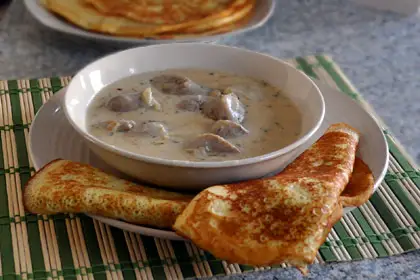
History and Background of Machanka: Belarusian Pork Stew Tradition
Machanka, a hearty pork stew, is deeply rooted in Belarusian culinary traditions. Originating from the rural kitchens of Belarus, this dish showcases the region’s reliance on pork, a staple in its agricultural landscape.
Machanka has historical significance, often associated with festive occasions and communal gatherings. The slow-cooked pork, accompanied by flavorful sauces and sides, reflects the warmth of Belarusian hospitality and the importance of shared meals in the country’s culture.
Belarus Food – Machanka Ingredients:
- 1 kg pork shoulder, cubed
- 2 onions, finely chopped
- 3 cloves garlic, minced
- 2 tablespoons vegetable oil
- 2 tablespoons tomato paste
- 1 cup beef or vegetable broth
- 1 cup sour cream
- Salt and pepper to taste
- Fresh parsley for garnish
- Mashed potatoes or draniki (potato pancakes) for serving
Belarus Food – Machanka Recipe:
1. Sear the Pork:
- In a large pot, heat vegetable oil over medium-high heat.
- Sear the cubed pork shoulder until browned on all sides.
2. Sauté Onions and Garlic:
- Add finely chopped onions to the pot and sauté until they are soft and translucent.
- Stir in minced garlic and cook for an additional minute.
3. Create the Sauce:
- Mix tomato paste into the pot, coating the pork and onions.
- Pour in the beef or vegetable broth and bring the mixture to a simmer.
- Add sour cream, stirring well to create a rich and creamy sauce.
4. Slow Cook the Pork:
- Reduce the heat to low, cover the pot, and let the pork simmer in the sauce for 1.5 to 2 hours or until the meat is tender.
5. Season and Garnish:
- Season the stew with salt and pepper to taste.
- Garnish with fresh parsley for added flavor and a pop of color.
6. Serve with Accompaniments:
- Serve Machanka hot, accompanied by mashed potatoes or draniki (potato pancakes) to soak up the delicious sauce.
Serving Information:
- Serves: 6 people
- Cooking Time: Approximately 2 hours
- Estimated Calories: 400 calories per serving (calories may vary based on specific ingredients and serving sizes)
Belarus Food – Nalistniki: Thin Pancakes

History and Background of Nalistniki: Belarusian Thin Pancakes
Nalistniki, thin pancakes with roots in Belarusian cuisine, offer a delightful blend of simplicity and flavor. Originating from the country’s culinary traditions, these pancakes are a staple in Belarusian households, enjoyed for breakfast or as a versatile base for both sweet and savory fillings.
Nalistniki showcase the resourcefulness of Belarusian cooks who transform basic ingredients into a versatile and delicious dish. With a history steeped in familial gatherings and festive celebrations, these thin pancakes continue to be a beloved part of Belarusian culinary heritage.
Belarus Food – Nalistniki: Thin Pancakes Ingredients:
Pancake Batter:
- 2 cups all-purpose flour
- 2 eggs
- 2 cups milk
- 1/2 teaspoon salt
- 2 tablespoons sugar (for sweet pancakes)
Filling (Optional):
- Sweet fillings: Jam, honey, fresh berries, or sweetened cottage cheese
- Savory fillings: Cheese, sautéed mushrooms, minced meat, or smoked salmon
Belarus Food – Nalistniki: Thin Pancakes Recipe:
1. Prepare the Pancake Batter:
- In a mixing bowl, whisk together flour, eggs, milk, salt, and sugar (if making sweet pancakes) until a smooth batter forms.
- Allow the batter to rest for 15-20 minutes.
2. Cook the Pancakes:
- Heat a non-stick skillet or pancake griddle over medium heat.
- Pour a ladleful of pancake batter onto the hot surface, swirling it to coat the bottom evenly.
- Cook until the edges of the pancake start to lift and the bottom is golden brown, then flip and cook the other side.
3. Fill the Pancakes:
- For sweet pancakes, spread jam, honey, or sweetened cottage cheese on the pancake and roll it up.
- For savory pancakes, fill them with cheese, sautéed mushrooms, minced meat, or smoked salmon.
4. Serve:
- Arrange the filled Nalistniki on a plate.
- Optionally, drizzle sweet pancakes with additional honey or sprinkle savory ones with fresh herbs.
5. Enjoy:
- Serve the Nalistniki warm and enjoy the delightful combination of thin pancakes and flavorful fillings.
Serving Information:
- Serves: 4 people
- Cooking Time: Approximately 30 minutes
- Estimated Calories: 150 calories per serving (calories may vary based on specific ingredients and serving sizes)
Belarus Food – Olivier Salad: Russian Salad
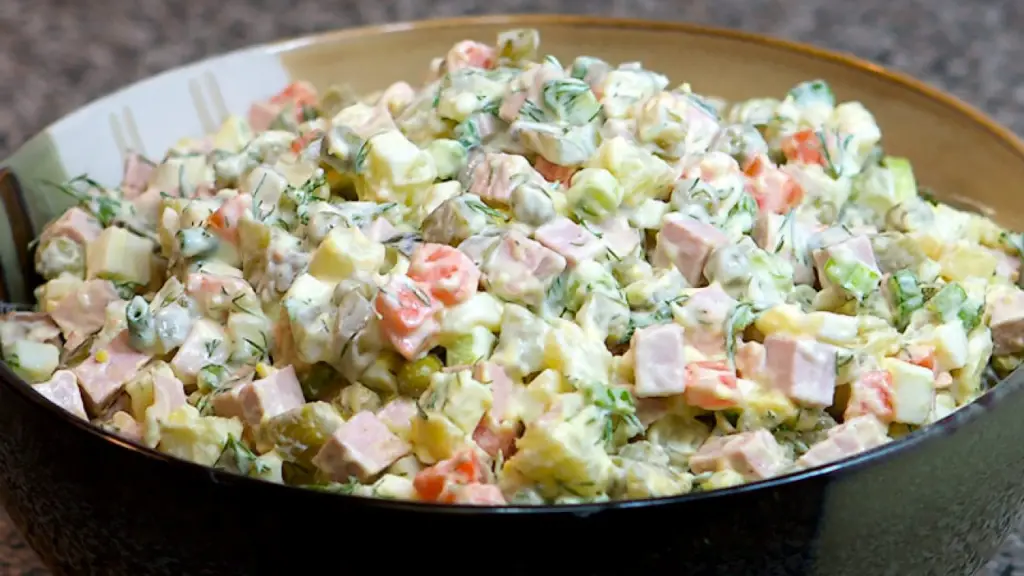
History and Background of Olivier Salad: A Russian and Belarusian Culinary Icon
Olivier Salad, also known as Russian Salad, has become a beloved dish in Belarusian cuisine, although its origins are Russian. Invented by Belgian chef Lucien Olivier in the 1860s in Moscow, this salad has evolved over the years and become a staple in various Eastern European countries, including Belarus.
Olivier Salad is often associated with festive occasions and is cherished for its delightful combination of flavors and textures.
Belarus Food – Olivier Salad: Russian Salad Ingredients:
- 4 medium-sized potatoes, boiled and diced
- 4 carrots, boiled and diced
- 1 cup boiled green peas
- 4 boiled eggs, diced
- 200g boiled and diced cooked ham or bologna
- 1/2 cup dill pickles, diced
- 1/2 cup green onions, finely chopped
- 1 cup mayonnaise
- Salt and pepper to taste
Belarus Food – Olivier Salad: Russian Salad Recipe:
1. Prepare Ingredients:
- Boil potatoes, carrots, green peas, and eggs until they are fully cooked.
- Dice the boiled potatoes, carrots, eggs, ham or bologna, dill pickles, and finely chop green onions.
2. Assemble the Salad:
- In a large mixing bowl, combine all the diced ingredients: potatoes, carrots, green peas, eggs, ham or bologna, dill pickles, and green onions.
3. Dress the Salad:
- Add mayonnaise to the bowl and gently fold it into the ingredients until everything is well coated.
- Season the salad with salt and pepper to taste. Mix well.
4. Chill and Serve:
- Cover the salad bowl and refrigerate for at least 2 hours to allow the flavors to meld.
- Before serving, give the salad a final toss and adjust the seasoning if necessary.
5. Garnish (Optional):
- Garnish the Olivier Salad with additional chopped green onions or fresh dill for a burst of color and added freshness.
Serving Information:
- Serves: 6 people
- Cooking Time: Approximately 30 minutes (excluding chilling time)
- Estimated Calories: 350 calories per serving (calories may vary based on specific ingredients and serving sizes)
Belarus Food – Pelmeni

History and Background of Pelmeni: Belarusian Dumplings with Siberian Roots
Pelmeni, a classic in Belarusian cuisine, originated from Siberia but has become an integral part of the culinary fabric in Belarus. These small, dough-wrapped pockets of minced meat bring a rich history to the dinner table.
Traditionally associated with winter months when food preservation was crucial, pelmeni reflect the nomadic cultures of Siberia.
The dish made its way into Belarus, where it has been embraced for its simplicity, heartiness, and the communal experience of making and enjoying these flavorful dumplings.
Belarus Food – Pelmeni Ingredients:
Dough:
- 3 cups all-purpose flour
- 1 cup water
- 2 eggs
- 1 teaspoon salt
Filling:
- 500g ground meat (beef, pork, or a mix)
- 1 onion, finely chopped
- Salt and pepper to taste
Belarus Food – Pelmeni Recipe:
1. Make the Dough:
- In a large mixing bowl, combine flour and salt.
- In a separate bowl, whisk together eggs and water.
- Gradually add the wet ingredients to the dry ingredients, mixing until a dough forms.
- Knead the dough on a floured surface until smooth, then cover and let it rest for 30 minutes.
2. Prepare the Filling:
- In a bowl, combine ground meat with finely chopped onions.
- Season the mixture with salt and pepper to taste.
3. Shape the Pelmeni:
- Roll out the dough on a floured surface until thin.
- Using a round cutter or glass, cut out circles from the dough.
- Place a small amount of the meat filling in the center of each circle.
4. Seal and Shape:
- Fold the circle in half, creating a half-moon shape.
- Pinch the edges to seal the dumpling, ensuring there are no openings.
5. Cook the Pelmeni:
- Bring a large pot of salted water to a boil.
- Carefully drop the pelmeni into the boiling water and cook until they float to the surface.
6. Serve:
- Remove the pelmeni with a slotted spoon and serve hot.
- Optionally, serve with melted butter, sour cream, or a savory sauce.
Serving Information:
- Serves: 6 people
- Cooking Time: Approximately 1 hour
- Estimated Calories: 300 calories per serving (calories may vary based on specific ingredients and serving sizes)
Belarus Food – Sashni

History and Background of Sashni: Belarusian Savory Stuffed Pancakes
Sashni, a cherished dish in Belarusian cuisine, boasts a history deeply intertwined with the country’s culinary traditions. Originating from the rural kitchens of Belarus, these savory stuffed pancakes have been a staple in households for generations.
Sashni reflects the resourcefulness of Belarusian cooks who transform basic ingredients into a flavorful and satisfying dish. With a history rooted in the agricultural landscapes of Belarus, these pancakes embody the warmth of home-cooked meals and communal dining.
Belarus Food – Sashni Ingredients:
Pancake Batter:
- 2 cups all-purpose flour
- 2 eggs
- 2 cups milk
- 1/2 teaspoon salt
Filling:
- 300g ground meat (beef, pork, or a mix)
- 1 onion, finely chopped
- 2 cloves garlic, minced
- Salt and pepper to taste
- 1 cup mushrooms, finely chopped (optional)
Belarus Food – Sashni Recipe:
1. Make the Pancake Batter:
- In a mixing bowl, whisk together flour, eggs, milk, and salt until a smooth batter forms.
- Allow the batter to rest for 15-20 minutes.
2. Prepare the Filling:
- In a pan, sauté finely chopped onions and minced garlic until softened.
- Add ground meat to the pan and cook until browned.
- Season with salt and pepper to taste.
- Optionally, add chopped mushrooms to the filling for added flavor.
3. Cook the Pancakes:
- Heat a non-stick skillet or pancake griddle over medium heat.
- Pour a ladleful of pancake batter onto the hot surface and spread it thinly.
- Cook until the edges of the pancake start to lift, then flip and cook the other side.
4. Assemble Sashni:
- Spoon a portion of the meat filling onto one half of the pancake.
- Fold the pancake over the filling, creating a half-moon shape.
- Press the edges to seal the pancake.
5. Serve:
- Repeat the process to make more Sashni.
- Serve the Sashni hot, optionally with a dollop of sour cream or a savory sauce.
Serving Information:
- Serves: 4 people
- Cooking Time: Approximately 45 minutes
- Estimated Calories: 300 calories per serving (calories may vary based on specific ingredients and serving sizes)
Belarus Food – Shkvarki

History and Background of Shkvarki: Belarusian Pork Cracklings Tradition
Shkvarki, a popular dish in Belarusian cuisine, has its roots in the preservation and utilization of pork. This traditional dish reflects the historical significance of utilizing every part of the animal, ensuring minimal waste.
Originating from the rural kitchens of Belarus, shkvarki involves rendering pork fat to create crispy cracklings, providing a savory and flavorful topping or ingredient in various dishes.
This culinary practice showcases the resourcefulness of Belarusian cooks, transforming humble ingredients into a delicacy that has become an integral part of the country’s gastronomic heritage.
Belarus Food – Shkvarki Ingredients:
- 500g pork fatback or pork belly
- Salt to taste
Belarus Food – Shkvarki Recipe:
1. Prepare the Pork Fat:
- Trim the pork fatback or pork belly into small cubes or strips.
2. Render the Fat:
- In a skillet or pan, place the pork fat pieces over low heat.
- Allow the fat to melt slowly, releasing its liquid form known as lard.
3. Extract the Cracklings:
- As the fat renders, the remaining solid bits, known as cracklings or shkvarki, will become crispy.
- Stir occasionally to ensure even cooking.
4. Season and Drain:
- Once the cracklings turn golden brown and achieve a crispy texture, sprinkle salt to taste.
- Remove the cracklings from the rendered fat and place them on a paper towel to drain excess oil.
5. Serve or Store:
- Serve the shkvarki immediately as a crunchy snack or topping for various dishes.
- Alternatively, store the cracklings in an airtight container for later use.
Serving Information:
- Serves: 6 people (as a topping)
- Cooking Time: Approximately 30 minutes
- Estimated Calories: 200 calories per serving (calories may vary based on specific ingredients and serving sizes)
Belarus Food – Sirniki: Cottage Cheese Crumpets

History and Background of Sirniki: Belarusian Cottage Cheese Crumpets
Sirniki, delightful cottage cheese crumpets, are a beloved part of Belarusian cuisine with a history rooted in the country’s rich agricultural heritage. Originating from traditional village kitchens, Sirniki showcase the resourcefulness of Belarusian cooks who utilized readily available ingredients, such as cottage cheese, to create a delicious and filling dish.
These crumpets have become a popular breakfast or snack option, loved for their fluffy texture and the delightful combination of cottage cheese and other simple ingredients.
Belarus Food – Sirniki: Cottage Cheese Crumpets Ingredients:
- 2 cups cottage cheese
- 2 eggs
- 1/4 cup sugar
- 1 teaspoon vanilla extract
- 1 cup all-purpose flour
- 1/2 teaspoon baking soda
- Pinch of salt
- Vegetable oil for frying
- Optional toppings: sour cream, jam, honey, or fresh berries
Belarus Food – Sirniki: Cottage Cheese Crumpets Recipe:
1. Prepare the Batter:
- In a mixing bowl, combine cottage cheese, eggs, sugar, and vanilla extract.
- In a separate bowl, whisk together flour, baking soda, and a pinch of salt.
- Gradually add the dry ingredients to the cottage cheese mixture, stirring until well combined.
2. Form Sirniki:
- Heat vegetable oil in a skillet over medium heat.
- Scoop spoonfuls of the batter and form them into small, flattened rounds to create sirniki.
3. Fry the Sirniki:
- Place the formed sirniki in the hot skillet and cook until the bottoms are golden brown.
- Flip the sirniki and cook the other side until golden brown and cooked through.
4. Serve:
- Remove the sirniki from the skillet and place them on a paper towel to absorb excess oil.
- Serve the sirniki hot, optionally topped with sour cream, jam, honey, or fresh berries.
Serving Information:
- Serves: 4 people
- Cooking Time: Approximately 20 minutes
- Estimated Calories: 250 calories per serving (calories may vary based on specific ingredients and serving sizes)
Belarus Food – Smazhenka

History and Background of Smazhenka: Belarusian Fried Pancakes
Smazhenka, a delightful dish in Belarusian cuisine, traces its roots back to the heart of Eastern Europe. Originating from rustic kitchens in Belarus, smazhenka showcases the simplicity and resourcefulness of traditional cooking.
These fried pancakes have been a comforting and cherished part of Belarusian households for generations, offering a versatile and tasty meal. As a symbol of home-cooked goodness, smazhenka reflects the cultural richness and love for hearty food in Belarus.
Belarus Food – Smazhenka Ingredients:
- 2 cups all-purpose flour
- 2 eggs
- 2 cups milk
- 1/2 teaspoon salt
- Vegetable oil for frying
Belarus Food – Smazhenka Recipe:
1. Prepare the Pancake Batter:
- In a mixing bowl, combine flour, eggs, milk, and salt.
- Whisk the ingredients until a smooth batter forms.
2. Fry the Pancakes:
- Heat vegetable oil in a skillet over medium heat.
- Pour a ladleful of pancake batter into the skillet, spreading it evenly.
- Cook until the edges of the pancake start to lift, then flip and cook the other side until golden brown.
3. Repeat the Process:
- Continue making pancakes, adding more oil to the skillet as needed.
- Place the cooked pancakes on a paper towel to absorb excess oil.
4. Serve:
- Serve the smazhenka hot, optionally with toppings like sour cream, jam, or honey.
Serving Information:
- Serves: 4 people
- Cooking Time: Approximately 30 minutes
- Estimated Calories: 150 calories per serving (calories may vary based on specific ingredients and serving sizes)
Belarus Food – Sorrel Soup
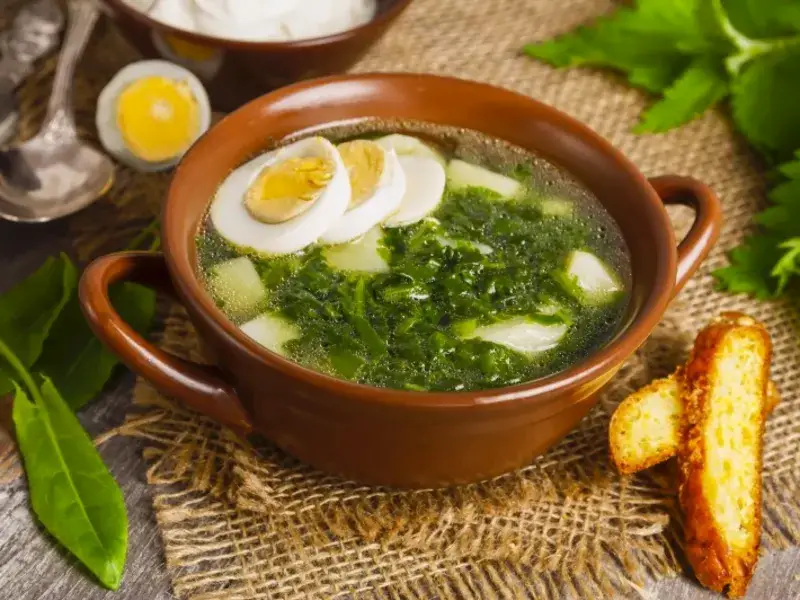
History and Background of Sorrel Soup: Belarusian Green Elixir
Sorrel soup, known as “shchavelya sup” in Belarusian, has a rich history deeply ingrained in the culinary traditions of Eastern Europe. Originating in the Belarusian countryside, this soup reflects the seasonal bounty of fresh ingredients.
Sorrel, a leafy green with a tangy flavor, is the star of this dish, and its inclusion in traditional recipes connects to the agricultural heritage of Belarus. Sorrel soup is a refreshing and nutritious dish.
It is often enjoyed during the spring and summer months, bringing a burst of green goodness to the Belarusian table.
Belarus Food – Sorrel Soup Ingredients:
- 4 cups fresh sorrel leaves, chopped
- 1 onion, finely chopped
- 2 medium potatoes, peeled and diced
- 1 carrot, peeled and grated
- 1 egg
- 1 tablespoon butter
- 6 cups chicken or vegetable broth
- Salt and pepper to taste
- Sour cream for garnish (optional)
Belarus Food – Sorrel Soup Recipe:
1. Prepare the Vegetables:
- Peel and dice the potatoes.
- Finely chop the onion and grate the carrot.
2. Sauté Vegetables:
- In a pot, melt butter over medium heat.
- Sauté the chopped onion until translucent.
- Add the diced potatoes and grated carrot, cooking for a few minutes.
3. Add Sorrel:
- Pour in the chicken or vegetable broth and bring the mixture to a boil.
- Reduce the heat, add the chopped sorrel leaves, and simmer until the potatoes are tender.
4. Temper the Egg:
- In a separate bowl, beat the egg.
- Gradually add a ladleful of hot soup to the beaten egg, stirring constantly to temper it.
5. Combine and Season:
- Pour the tempered egg mixture back into the pot, stirring continuously.
- Season the soup with salt and pepper to taste.
6. Serve:
- Ladle the sorrel soup into bowls.
- Optionally, garnish with a dollop of sour cream.
Serving Information:
- Serves: 4 people
- Cooking Time: Approximately 30 minutes
- Estimated Calories: 150 calories per serving (calories may vary based on specific ingredients and serving sizes)
Belarus Food – Spring Salad
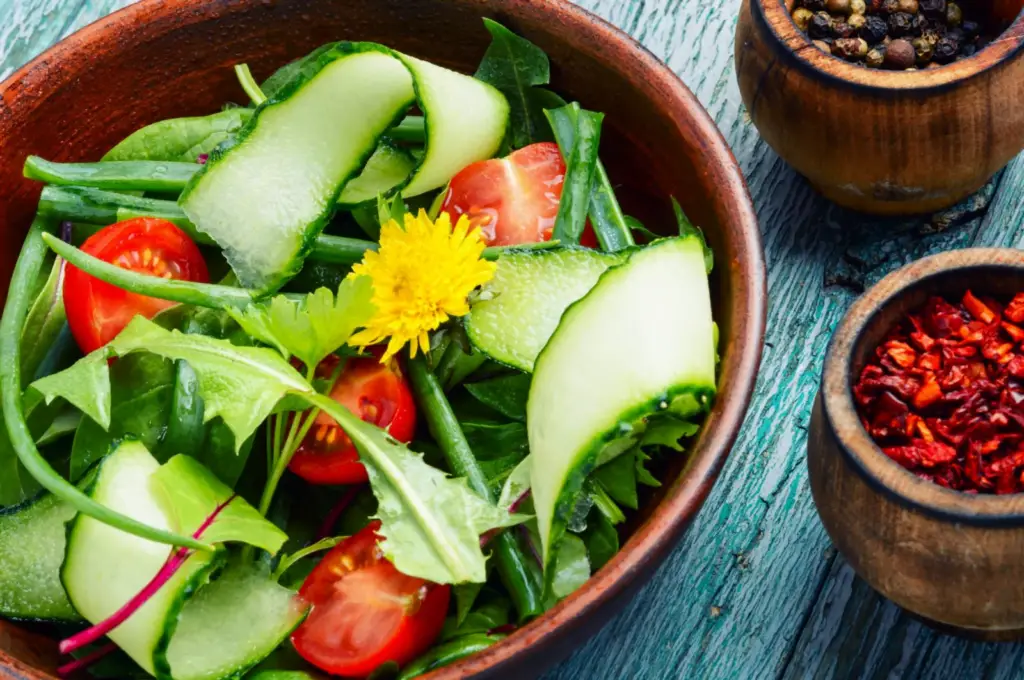
History and Background of Spring Salad: Belarusian Freshness on a Plate
Spring Salad, a vibrant and refreshing dish in Belarusian cuisine, encapsulates the essence of the season. Originating from the fertile lands of Belarus, this salad celebrates the abundance of fresh vegetables that emerge with the arrival of spring.
Reflecting the country’s agrarian traditions, Spring Salad is a colorful medley of crisp and flavorful ingredients, offering a burst of vitality on the plate. As a nod to the importance of seasonal produce, this salad embodies the connection between Belarusians and the bounties of nature.
Belarus Food – Spring Salad Ingredients:
- 2 cups cherry tomatoes, halved
- 1 cucumber, sliced
- 1 red bell pepper, diced
- 1 green bell pepper, diced
- 1 cup radishes, thinly sliced
- 1/2 red onion, thinly sliced
- 1/4 cup fresh dill, chopped
- 1/4 cup fresh parsley, chopped
- 3 tablespoons olive oil
- 1 tablespoon balsamic vinegar
- Salt and pepper to taste
Belarus Food – Spring Salad Recipe:
1. Prepare the Vegetables:
- Halve the cherry tomatoes.
- Slice the cucumber and thinly slice the radishes.
- Dice the red and green bell peppers.
- Thinly slice the red onion.
- Chop fresh dill and parsley.
2. Assemble the Salad:
- In a large salad bowl, combine the halved cherry tomatoes, sliced cucumber, diced bell peppers, sliced radishes, sliced red onion, and chopped fresh herbs.
3. Dress the Salad:
- Drizzle olive oil and balsamic vinegar over the salad.
- Toss the salad gently to coat the vegetables evenly with the dressing.
4. Season:
- Season the Spring Salad with salt and pepper to taste.
- Toss again to ensure the seasoning is well distributed.
5. Serve:
- Chill the salad in the refrigerator for at least 30 minutes before serving.
- Serve the Spring Salad as a refreshing side dish or a light and healthy main course.
Serving Information:
- Serves: 4 people
- Preparation Time: 15 minutes
- Estimated Calories: 120 calories per serving (calories may vary based on specific ingredients and serving sizes)
Belarus Food – Syrnik
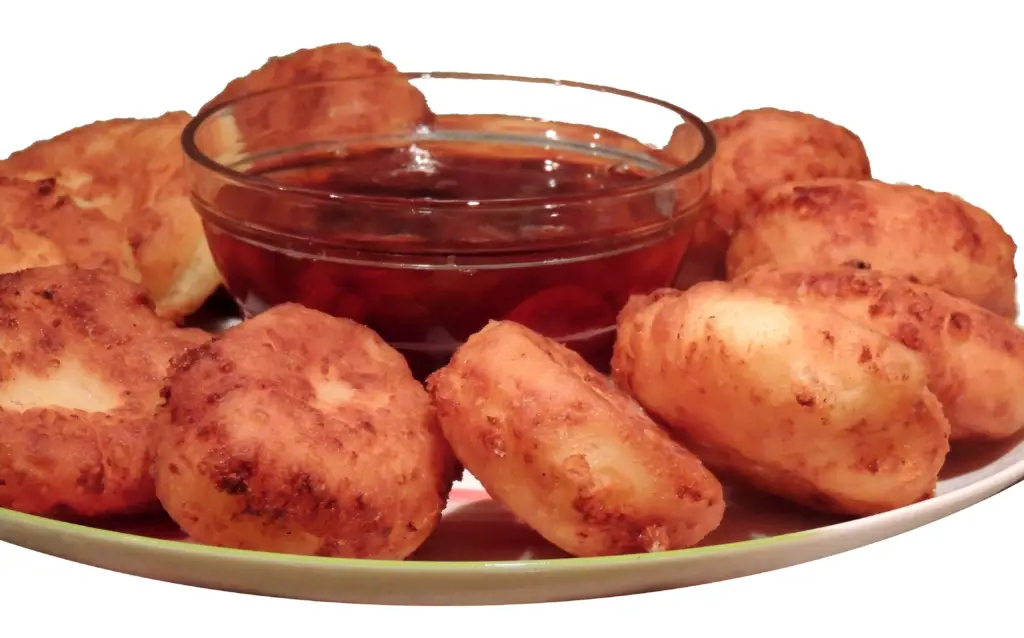
History and Background of Syrnik: Belarusian Cheesecake Pancakes
Syrnik, a beloved dish in Belarusian cuisine, has a history deeply rooted in the region’s dairy-rich traditions. Originating from rustic kitchens, syrnik showcases the importance of dairy products in Belarusian culinary heritage.
These cheesecake pancakes are a delightful fusion of creamy cottage cheese and the heartiness of traditional pancakes. Often enjoyed for breakfast or as a sweet treat, syrnik reflects the simplicity and warmth of Belarusian home cooking.
Belarus Food – Syrnik Ingredients:
- 2 cups cottage cheese
- 2 eggs
- 1/4 cup sugar
- 1 teaspoon vanilla extract
- 1 cup all-purpose flour
- 1/2 teaspoon baking soda
- Pinch of salt
- Butter or oil for frying
- Optional toppings: sour cream, jam, honey, or fresh berries
Belarus Food – Syrnik Recipe:
1. Prepare the Batter:
- In a mixing bowl, combine cottage cheese, eggs, sugar, and vanilla extract.
- In a separate bowl, whisk together flour, baking soda, and a pinch of salt.
- Gradually add the dry ingredients to the cottage cheese mixture, stirring until well combined.
2. Form Syrnik:
- Heat butter or oil in a skillet over medium heat.
- Spoon portions of the batter onto the skillet, forming small, flattened rounds to create syrnik.
3. Fry the Syrnik:
- Cook until the edges of the syrnik start to lift and the bottom is golden brown.
- Flip and cook the other side until golden brown and cooked through.
4. Repeat the Process:
- Continue making syrnik, adding more butter or oil to the skillet as needed.
- Place the cooked syrnik on a paper towel to absorb excess oil.
5. Serve:
- Serve the syrnik hot, optionally topped with sour cream, jam, honey, or fresh berries.
Serving Information:
- Serves: 4 people
- Cooking Time: Approximately 20 minutes
- Estimated Calories: 250 calories per serving (calories may vary based on specific ingredients and serving sizes)
Belarus Food – Tsibriki
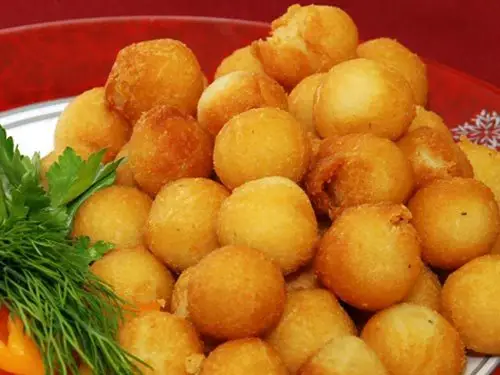
History and Background of Tsibriki: Belarusian Almond Crescents
Tsibriki, delightful almond crescents, have a sweet history deeply embedded in Belarusian culinary traditions. Originating from home kitchens and bakeries across Belarus, these crescents showcase the country’s love for nutty and buttery pastries.
The delicate almond flavor and flaky texture make tsibriki a popular treat during celebrations, holidays, and family gatherings. As a testament to the artistry of Belarusian baking, these crescents embody the warmth and sweetness of the country’s dessert culture.
Belarus Food – Tsibriki Ingredients:
- 1 cup unsalted butter, softened
- 1/2 cup granulated sugar
- 1 teaspoon vanilla extract
- 1 cup ground almonds
- 2 cups all-purpose flour
- 1/4 teaspoon salt
- Powdered sugar for dusting
Belarus Food – Tsibriki Recipe:
1. Cream Butter and Sugar:
- In a mixing bowl, cream together softened butter and granulated sugar until light and fluffy.
- Add vanilla extract to the mixture and continue to beat until well combined.
2. Add Almonds and Flour:
- Gradually add ground almonds, all-purpose flour, and salt to the creamed mixture.
- Mix until a soft and smooth dough forms.
3. Shape the Crescents:
- Preheat the oven to 350°F (180°C).
- Take small portions of the dough and shape them into crescents or half-moon shapes.
4. Bake:
- Place the shaped tsibriki on a baking sheet lined with parchment paper.
- Bake in the preheated oven for 15-20 minutes or until the edges are lightly golden.
5. Dust with Powdered Sugar:
- Remove the tsibriki from the oven and let them cool slightly.
- Dust the crescents with powdered sugar while they are still warm.
6. Serve:
- Allow the tsibriki to cool completely before serving.
- Serve these almond crescents as a delightful accompaniment to tea or coffee.
Serving Information:
- Serves: 8 people
- Cooking Time: Approximately 30 minutes
- Estimated Calories: 200 calories per serving (calories may vary based on specific ingredients and serving sizes)
Belarus Food – Vareniki

History and Background of Vareniki: Belarusian Dumplings Tradition
Vareniki, a staple in Belarusian cuisine, carry a rich history dating back centuries. These dumplings are a testament to the resourcefulness of Belarusian cooks, creating a versatile dish that can be savory or sweet, depending on the filling.
Originating from rural kitchens, vareniki hold a special place in both everyday meals and festive occasions. The tradition of making and enjoying vareniki has been passed down through generations, showcasing the cultural significance of this beloved dish in Belarus.
Belarus Food – Vareniki Ingredients:
Dough:
- 2 cups all-purpose flour
- 1 egg
- 1/2 cup water
- 1/2 teaspoon salt
Filling:
- 2 cups mashed potatoes (for savory vareniki)
- 1 cup cottage cheese mixed with sugar (for sweet vareniki)
- Optional savory fillings: minced meat, sautéed onions, mushrooms
Serving:
- Sour cream
- Butter
Belarus Food – Vareniki Recipe:
1. Prepare the Dough:
- In a mixing bowl, combine flour, egg, water, and salt.
- Knead the ingredients into a smooth dough.
- Cover the dough and let it rest for 30 minutes.
2. Roll Out the Dough:
- On a floured surface, roll out the dough to about 1/8 inch thickness.
3. Cut and Fill:
- Use a round cutter or a glass to cut circles from the rolled-out dough.
- Place a spoonful of filling (potatoes, cottage cheese, or other options) in the center of each circle.
4. Shape the Vareniki:
- Fold the dough over the filling, creating a half-moon shape.
- Press the edges to seal, ensuring no filling escapes during cooking.
5. Boil the Vareniki:
- Bring a large pot of salted water to a boil.
- Drop the vareniki into the boiling water and cook until they float to the surface.
6. Serve:
- Remove the cooked vareniki with a slotted spoon and serve hot.
- Serve savory vareniki with sour cream and optional sautéed onions; serve sweet vareniki with sour cream and a drizzle of melted butter.
Serving Information:
- Serves: 4 people
- Cooking Time: Approximately 30 minutes
- Estimated Calories: 250 calories per serving (calories may vary based on specific ingredients and serving sizes)
Belarus Food – Poppy seed cakes

Poppy Seed Cakes: A Belarusian Sweet Tradition
History and Background: Poppy Seed Cakes, a beloved dessert in Belarusian cuisine, have deep historical roots in the region’s culinary traditions. Often associated with festive occasions and family gatherings, these cakes showcase the influence of Eastern European flavors.
Belarusians have long embraced the richness of poppy seeds, and this dessert, with its sweet and nutty profile, encapsulates the warmth and sweetness of Belarusian hospitality.
Ingredients:
Cake:
- 2 cups all-purpose flour
- 1 cup sugar
- 1 cup unsalted butter, softened
- 3 large eggs
- 1 cup milk
- 1 cup ground poppy seeds
- 1 teaspoon vanilla extract
- 1 teaspoon baking powder
- 1/2 teaspoon baking soda
- Pinch of salt
Glaze:
- 1 cup powdered sugar
- 2 tablespoons lemon juice
- 1 tablespoon poppy seeds
Recipe:
Making the Poppy Seed Cake
- Preheat Oven:
- Preheat the oven to 350°F (175°C).
- Grease and flour a bundt pan.
- Cream Butter and Sugar:
- In a bowl, cream together softened butter and sugar until light and fluffy.
- Add Eggs and Vanilla:
- Add eggs one at a time, beating well after each addition.
- Mix in vanilla extract.
- Combine Dry Ingredients:
- In a separate bowl, whisk together flour, baking powder, baking soda, and a pinch of salt.
- Alternate Mixing:
- Gradually add the dry ingredients to the wet ingredients, alternating with milk.
- Begin and end with the dry ingredients.
- Fold in Poppy Seeds:
- Gently fold in ground poppy seeds into the batter until evenly distributed.
- Bake:
- Pour the batter into the prepared bundt pan.
- Bake for 45-50 minutes or until a toothpick inserted into the center comes out clean.
Glazing the Cake
- Prepare Glaze:
- In a bowl, whisk together powdered sugar and lemon juice until smooth.
- Stir in poppy seeds.
- Glaze the Cake:
- Once the cake has cooled for about 10 minutes, drizzle the glaze over the top.
- Serve and Enjoy:
- Allow the cake to cool completely before slicing and serving.
Serving Size: 10-12 people
Estimated Cooking Time: 1 hour
Calories (per serving): Approximately 350 calories
Belarus Food – Vinegret
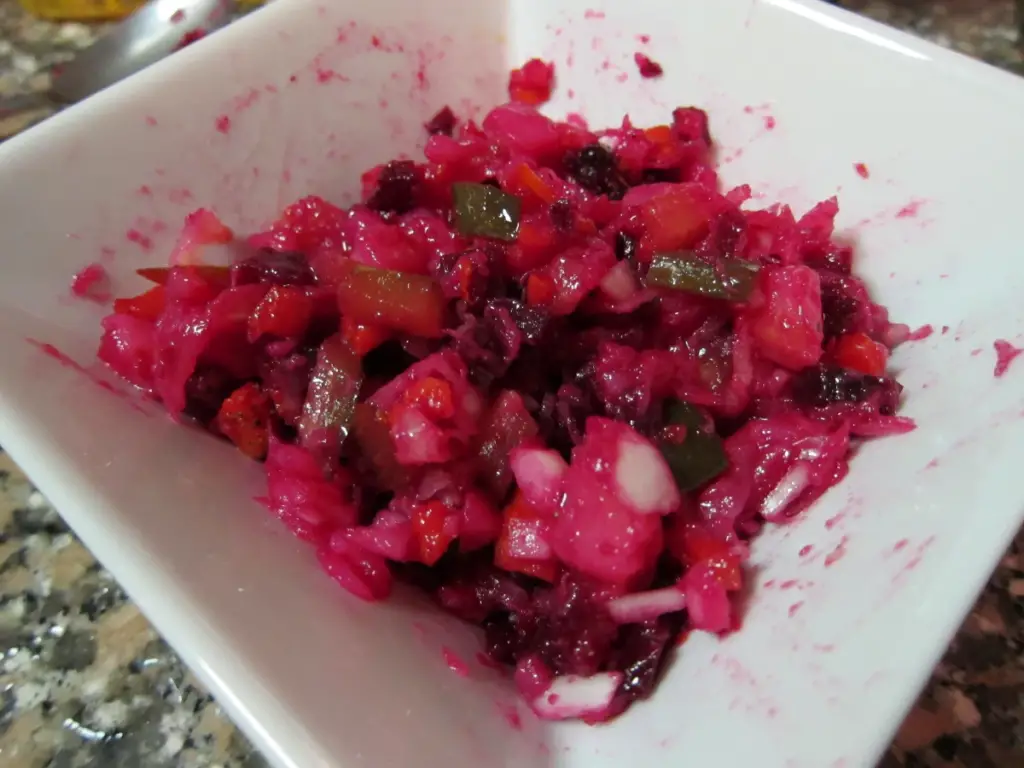
History and Background of Vinegret: Belarusian Root Vegetable Salad
Vinegret, a colorful root vegetable salad, has a history deeply rooted in Belarusian culinary traditions. Originating from the fertile lands of Belarus, this dish reflects the abundance of locally grown vegetables and the resourcefulness of the country’s cooks.
Vinegret is a beloved part of Belarusian cuisine, offering a refreshing medley of flavors and textures. As a symbol of the connection between the land and the table, this salad is a wholesome representation of the country’s agricultural heritage.
Belarus Food – Vinegret Ingredients:
- 3 medium beets, boiled and diced
- 4 medium potatoes, boiled and diced
- 3 medium carrots, boiled and diced
- 1 large onion, finely chopped
- 4 pickles, diced
- 1 cup sauerkraut, drained
- 1 cup cooked green peas
- 3 tablespoons vegetable oil
- 2 tablespoons apple cider vinegar
- Salt and pepper to taste
- Fresh dill for garnish
Belarus Food – Vinegret Recipe:
1. Prepare the Vegetables:
- Boil beets, potatoes, and carrots until tender. Allow them to cool before peeling and dicing.
- Finely chop the onion and dice the pickles.
2. Assemble the Salad:
- In a large bowl, combine the diced beets, potatoes, carrots, chopped onion, pickles, sauerkraut, and cooked green peas.
3. Dress the Salad:
- Drizzle vegetable oil and apple cider vinegar over the vegetables.
- Gently toss the salad until the ingredients are well coated with the dressing.
4. Season:
- Season the vinegret with salt and pepper to taste.
- Toss again to ensure even seasoning.
5. Garnish and Serve:
- Garnish the salad with fresh dill.
- Chill the vinegret in the refrigerator for at least 1 hour before serving.
Serving Information:
- Serves: 6 people
- Preparation Time: 20 minutes
- Cooking Time: 30 minutes (for boiling vegetables)
- Estimated Calories: 180 calories per serving (calories may vary based on specific ingredients and serving sizes)
Belarus Food – Vereshchaka

Vereshchaka: A Hearty Belarusian Soup with Rural Roots
History and Background: Vereshchaka, a traditional Belarusian soup, carries with it the essence of rustic life and the agricultural heritage of the region. Originating from Belarusian villages, this soup showcases the resourcefulness of its people, incorporating ingredients readily available in the countryside.
Typically prepared during colder months, Vereshchaka offers both nourishment and comfort, embodying the warmth of community and the simplicity of Belarusian culinary traditions.
Ingredients:
- 1 cup dried mushrooms (porcini or wild mushrooms)
- 1 cup pearl barley
- 1 large onion, finely chopped
- 2 carrots, diced
- 2 potatoes, diced
- 1/2 small cabbage, shredded
- 2 cloves garlic, minced
- 2 bay leaves
- Salt and pepper to taste
- Fresh dill for garnish
- Sour cream for serving
Recipe:
Preparing Ingredients
- Soak Dried Mushrooms:
- Place dried mushrooms in a bowl and cover with hot water. Allow them to soak for at least 1 hour or until they are fully rehydrated.
Making Vereshchaka
- Cook Pearl Barley:
- In a separate pot, cook pearl barley according to package instructions until tender.
- Prepare Mushrooms:
- Once rehydrated, strain the mushrooms, reserving the soaking liquid.
- Chop the mushrooms into bite-sized pieces.
- Saute Vegetables:
- In a large soup pot, sauté chopped onion, diced carrots, and minced garlic until softened.
- Add Potatoes and Cabbage:
- Add diced potatoes, shredded cabbage, and chopped rehydrated mushrooms to the pot.
- Pour Soaking Liquid:
- Strain the reserved mushroom soaking liquid to remove any debris and add it to the pot.
- Simmer with Barley:
- Add cooked pearl barley to the pot and stir well.
- Add bay leaves, salt, and pepper to taste.
- Simmer Until Vegetables are Tender:
- Simmer the soup over medium heat until the vegetables are tender and the flavors meld, approximately 20-25 minutes.
- Serve Hot:
- Ladle Vereshchaka into bowls, garnish with fresh dill, and serve hot with a dollop of sour cream.
Serving Size: 6 people
Estimated Cooking Time: 1.5 hours (including soaking time)
Calories (per serving): Approximately 220 calories
Belarus Food – Zhurek

History and Background of Zhurek: Belarusian Sour Rye Soup
Zhurek, a sour rye soup, has a storied history deeply rooted in Belarusian culinary traditions. Originating from the country’s rustic kitchens, this soup reflects the historical use of fermented ingredients, particularly sourdough, which imparts a distinctive tang to the dish.
Zhurek is often associated with festive occasions, especially Easter, and is cherished for its rich flavor profile. As a symbol of resourcefulness and the importance of fermentation, zhurek showcases the creativity of Belarusian cooks in transforming simple ingredients into a flavorful and hearty soup.
Belarus Food – Zhurek Ingredients:
Sour Base (Zakwas):
- 1 cup rye flour
- 1 cup water
- 1 garlic clove, minced
Soup:
- 1 cup sourdough starter (zakwas)
- 6 cups chicken or vegetable broth
- 1/2-pound smoked sausage, sliced
- 1 onion, finely chopped
- 2 medium potatoes, peeled and diced
- 1 carrot, peeled and grated
- 1 bay leaf
- 5 hard-boiled eggs, peeled and chopped
- Salt and pepper to taste
- Fresh parsley for garnish
Belarus Food – Zhurek Recipe:
1. Prepare the Sour Base (Zakwas):
- In a glass jar, mix rye flour, water, and minced garlic.
- Cover the jar with a cloth and let it ferment in a warm place for 3-4 days, stirring occasionally.
2. Make the Soup:
- In a large pot, combine the sourdough starter (zakwas) and chicken or vegetable broth.
- Bring the mixture to a simmer.
3. Sauté Sausage and Onion:
- In a separate pan, sauté sliced smoked sausage and finely chopped onion until golden brown.
4. Add Vegetables:
- Add diced potatoes, grated carrot, and a bay leaf to the soup.
- Simmer until the vegetables are tender.
5. Incorporate Sausage and Onion:
- Add the sautéed sausage and onion to the soup.
- Season with salt and pepper to taste.
6. Serve:
- Ladle the zhurek into bowls, garnish with chopped hard-boiled eggs and fresh parsley.
- Serve hot, celebrating the unique and tangy flavor of this Belarusian sour rye soup.
Serving Information:
- Serves: 6 people
- Cooking Time: Approximately 1 hour
- Estimated Calories: 300 calories per serving (calories may vary based on specific ingredients and serving sizes)
Conclusion
Belarusian cuisine offers a tantalizing glimpse into the rich tapestry of culture, history, and tradition that defines this Eastern European nation. From hearty stews and savory dumplings to delectable pastries and comforting soups, Belarusian food is a celebration of the country’s agricultural abundance and culinary ingenuity.
Through our exploration of Belarusian cuisine, we’ve discovered not just dishes but a reflection of the Belarusian spirit—a spirit of resilience, warmth, and hospitality. Whether shared around a family table, enjoyed in a cozy cafe, or sampled at a bustling market, Belarusian food brings people together and fosters a sense of connection and community.
As we bid farewell to the flavors and aromas of Belarusian cuisine, let us carry with us the memories of hearty meals and heartfelt conversations shared with loved ones. And may we continue to appreciate and celebrate the culinary treasures of Belarus, keeping alive the traditions and legacies that make its food a true delight for the senses.
Frequently Asked Questions
Q: What is the origin of Belarusian cuisine?
Belarusian cuisine has deep historical roots and is influenced by the country’s agrarian traditions and geographical location. With a focus on hearty and nourishing dishes, it reflects the availability of locally grown produce, dairy, and grains.
Q: What are some key ingredients in Belarusian dishes?
Belarusian cuisine relies on a variety of ingredients, including potatoes, grains, dairy products, root vegetables, and meats such as pork and poultry. Mushrooms, berries, and herbs are also commonly used, reflecting the country’s rich natural resources.
Q: How does Belarusian cuisine vary across regions?
Belarusian cuisine exhibits regional variations influenced by local traditions, climate, and ingredient availability. Different regions may have unique twists on traditional dishes, showcasing the diversity within the country’s culinary landscape.
Q: What are some popular Belarusian desserts?
Belarusian desserts often feature ingredients like honey, berries, and cottage cheese. Sweet treats like syrnik (cottage cheese pancakes), piachista (a type of honey cake), and verashchaka (honey-infused cake) are among the favorites.
Q: Can you explain the significance of sourdough in Belarusian cuisine?
Sourdough holds cultural significance in Belarusian cuisine, particularly in dishes like zhurek (sour rye soup). The use of fermented sourdough adds a distinct tanginess and depth of flavor to soups, showcasing the importance of traditional fermentation techniques.
Q: What role do seasonal ingredients play in Belarusian cooking?
Seasonal ingredients play a crucial role in Belarusian cooking, influencing the availability and freshness of produce. The cuisine celebrates the flavors of each season, with dishes like holodnik (cold beet soup) being popular in the summer, while hearty stews and soups dominate the winter menu.
Q: How has Belarusian cuisine evolved over time?
Belarusian cuisine has evolved over time, incorporating influences from neighboring countries and adapting to changing agricultural practices. While traditional dishes remain central, modern variations and international influences have contributed to a dynamic culinary landscape in Belarus.

